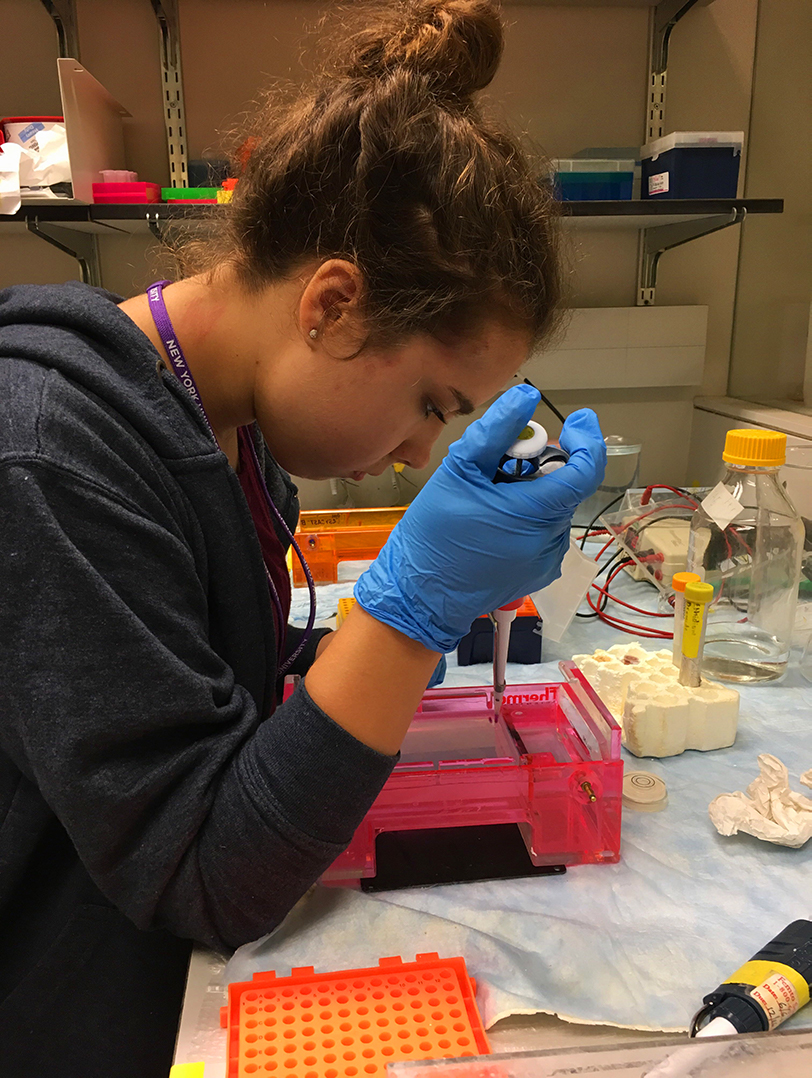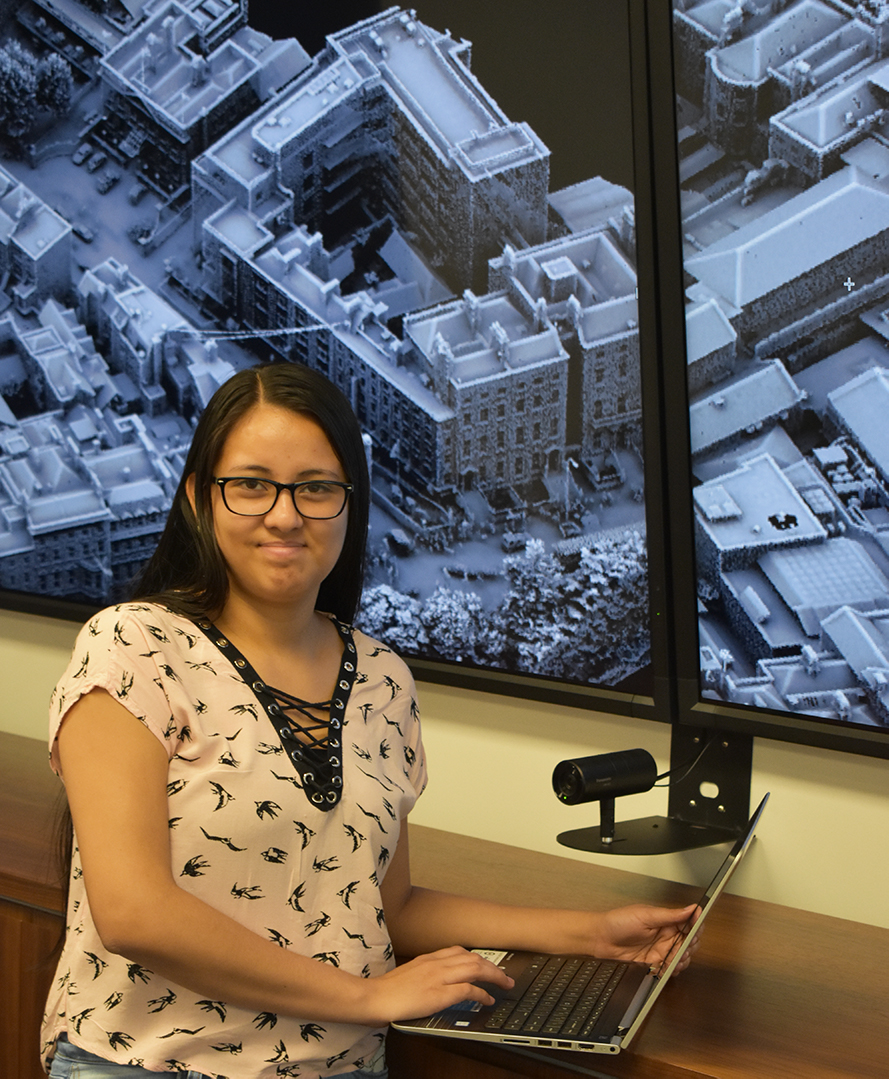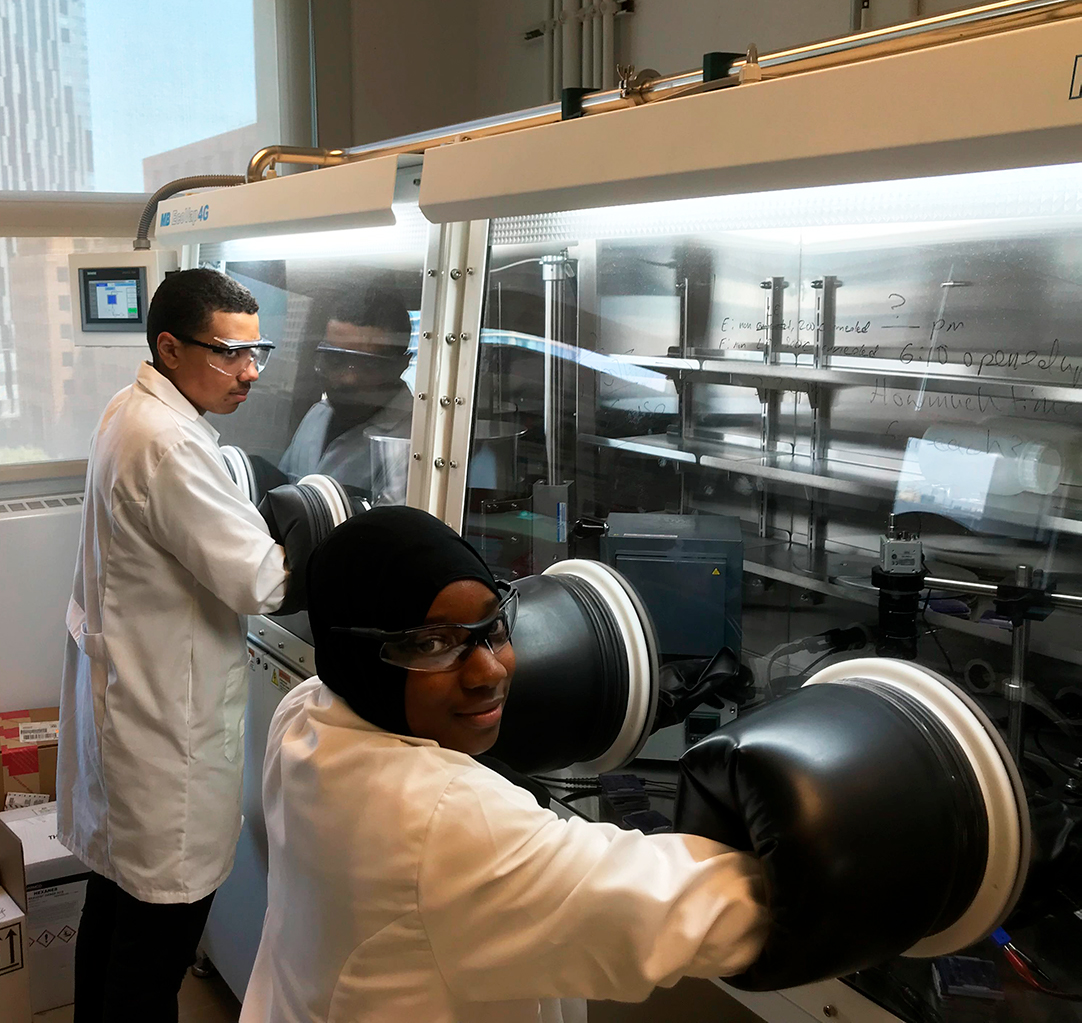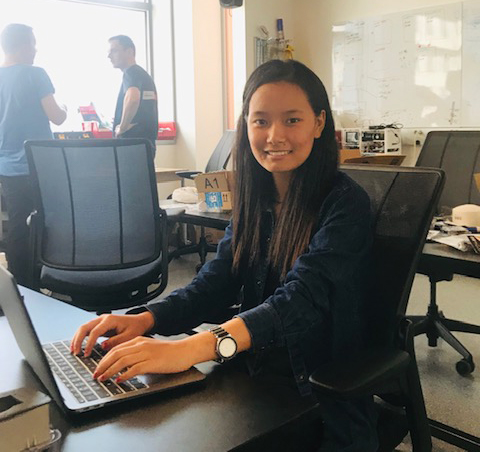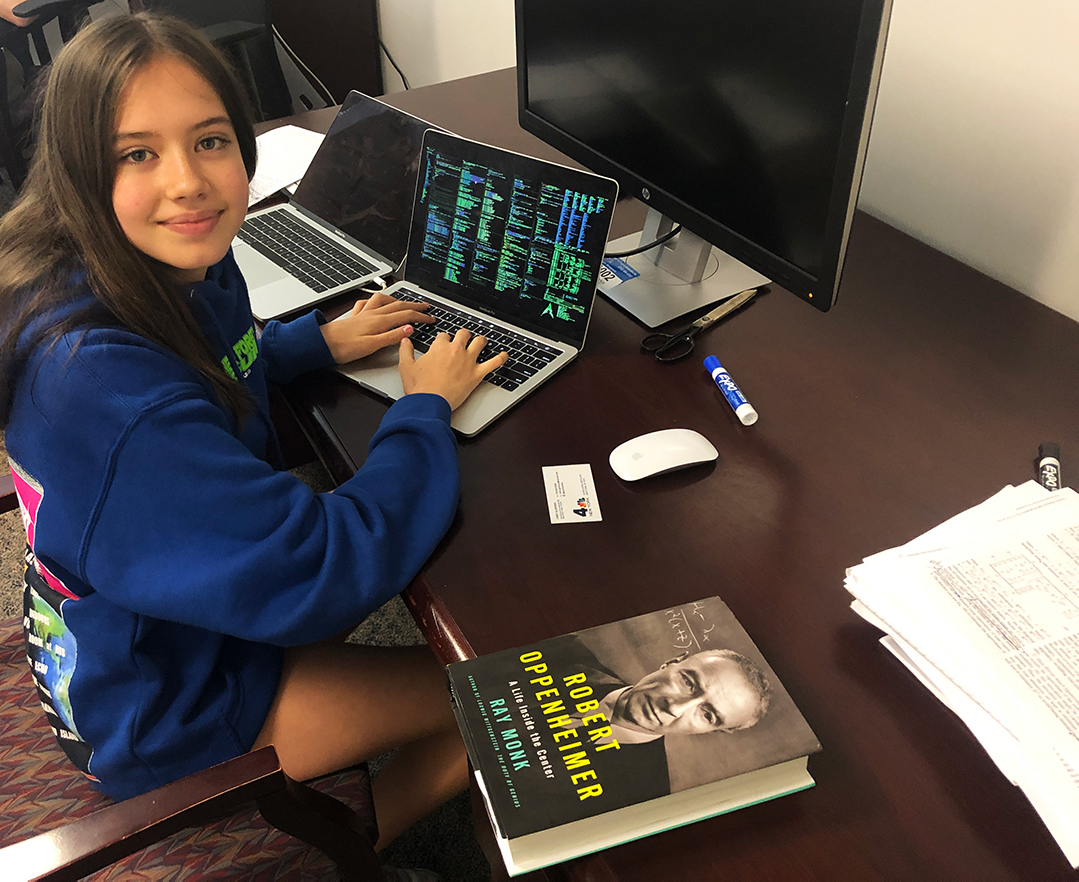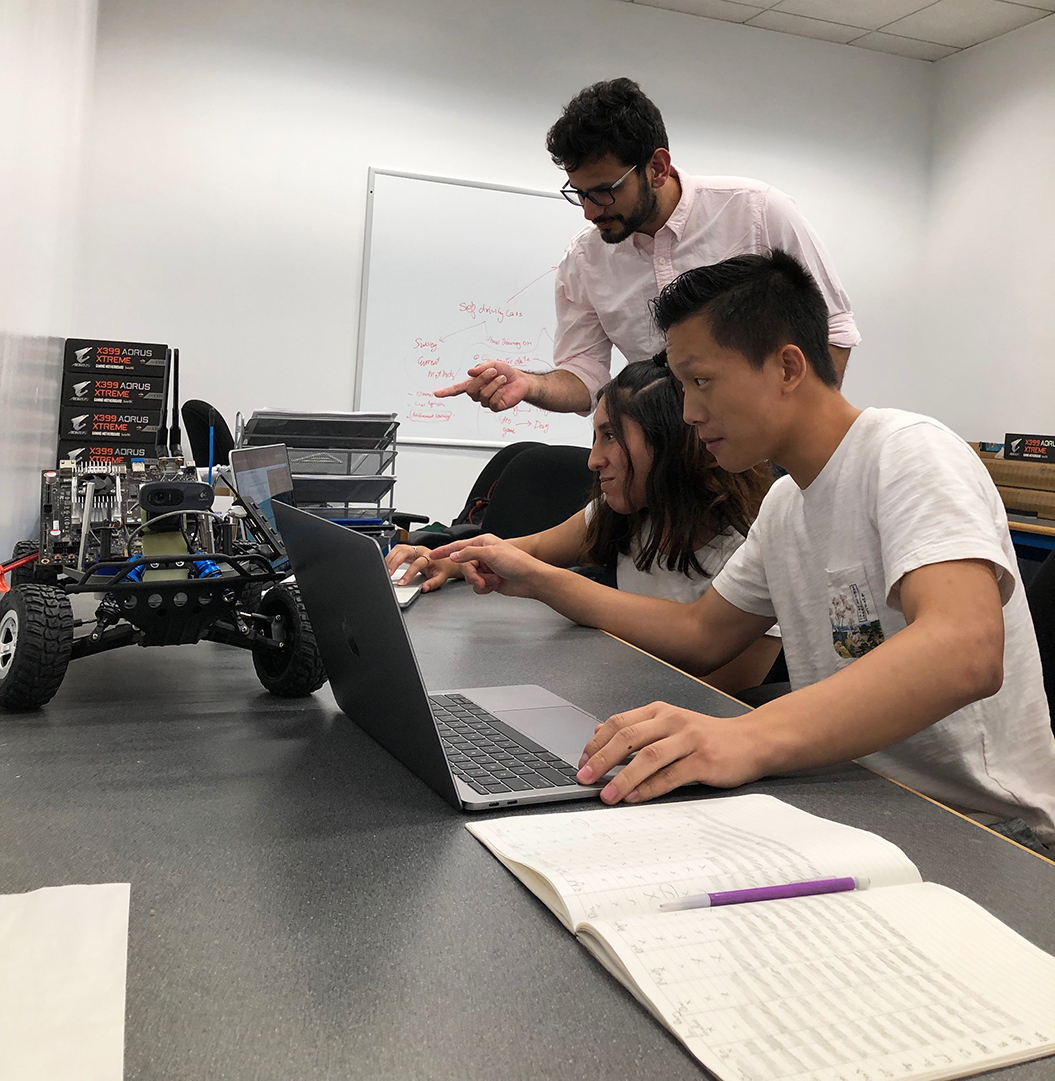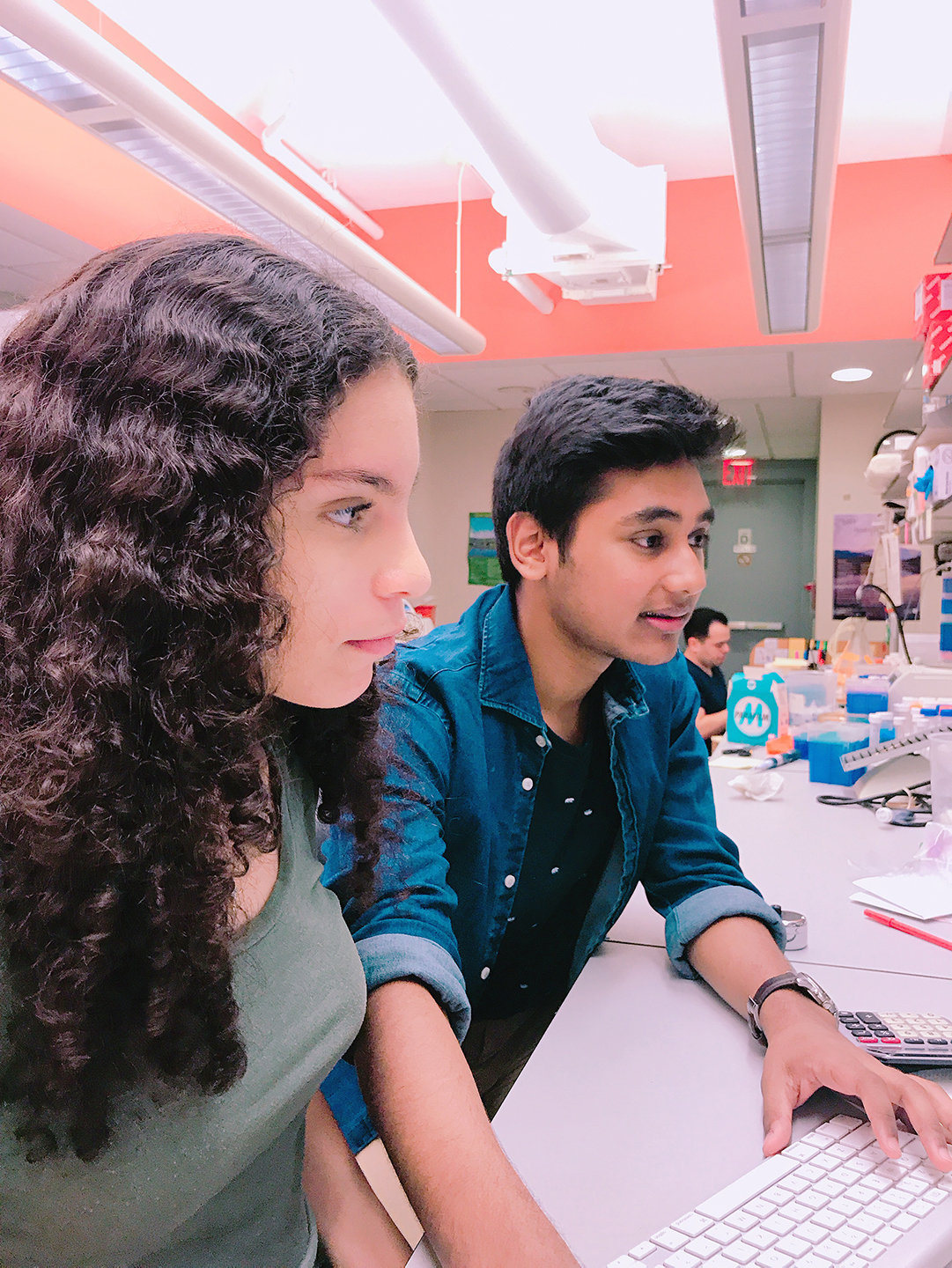ARISE 2019 Colloquium
Friday, August 16th, 2019 10:00 AM – 12:10 PM
NYU Tandon School of Engineering
6 MetroTech Center – Brooklyn, NY
RSVP Now
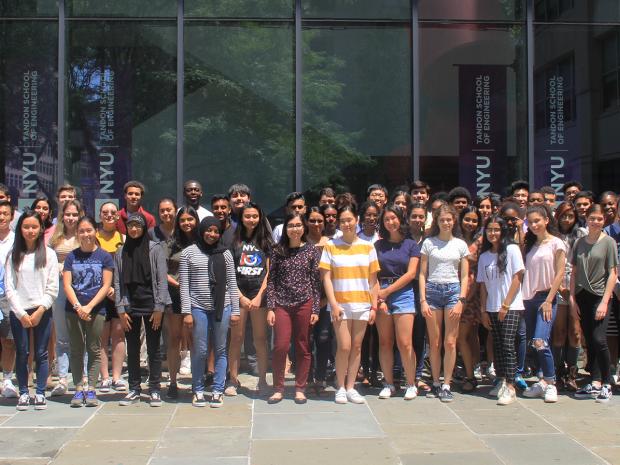
ARISE 2019 Colloquium
Welcome to the ARISE 2019 Colloquium. Students representing nearly every field of engineering have been working intensively in their labs conducting research projects with mentors and faculty, taking full advantage of our NYU facilities. We are pleased to present the culmination of these efforts and are eager to acknowledge the hard work and dedication of the 2019 ARISE class. You can view student presentation times and venues below and then RSVP here.
The Center for K12 STEM Education acknowledges and thanks all of the mentors and faculty from 31 labs across the NYU Tandon School of Engineering and the NYU College of Arts and Sciences for their support and engagement given to ARISE and its students. To find out more about these labs and their research, please click here.
Presentations will run simultaneously in five adjacent rooms on the second floor of Rogers Hall in 6 Metrotech. Student presenters and their assigned rooms are noted below. Please click on the links to view details, abstracts, and specific presentation times. RSVP here
Venue Locations & Schedule
All presentations will be on the second floor of Rogers Hall in the 6 Metrotech Building - RSVP here
- Session 1: 10-11:00AM
- Break: 11:00-11:10AM
- Session 2: 11:10-12:10PM
- Program Lunch: 12:10-12:30PM
Venue 1
- RH 201
Venue 2
- RH 203
Venue 3
- RH 205
Venue 4
- RH 207
Venue 5
- RH 215
Venue 1 Abstracts
Eleni Retzepis, Yaseen Saleh
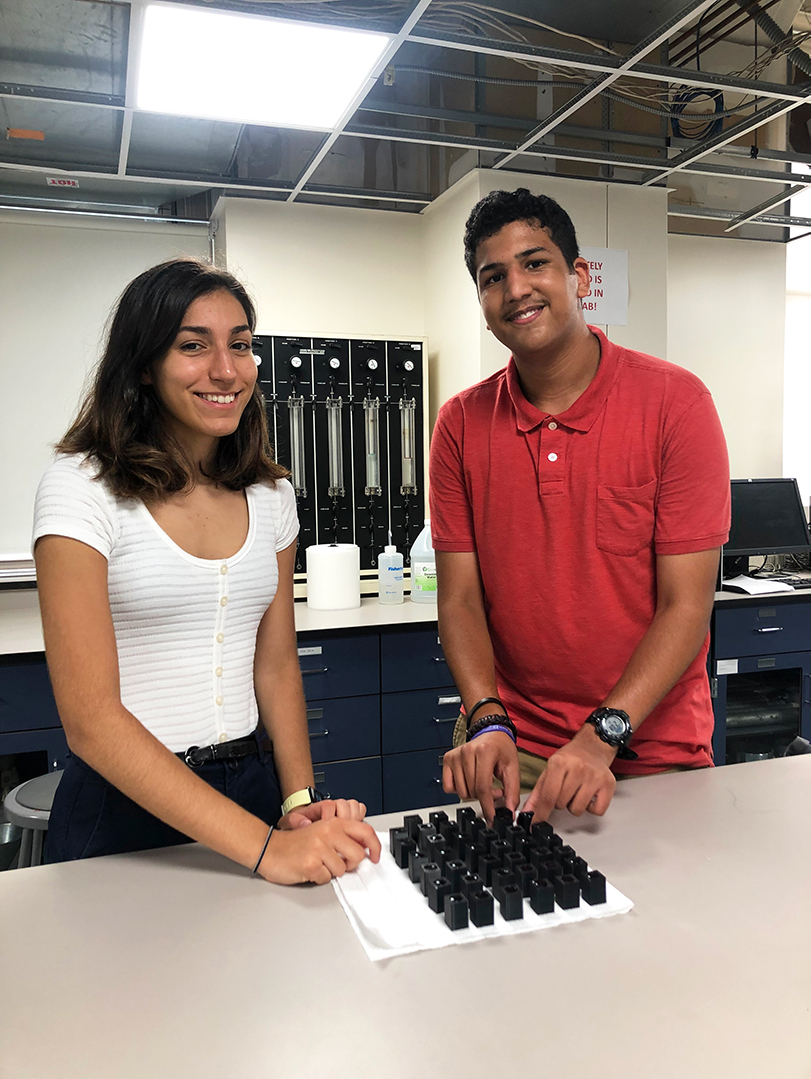
- Lab: Soil Mechanics [Civil Engineering]
- Faculty: Magued Iskander
- Mentor(s): Linzhu Li, Abdelaziz Ads, Antonio Kodsy
- Time: 10:00-10:20 am
Abstract: The advanced analysis of flow through porous media is of interest to many geotechnical engineers because it works as an essential ingredient for filter and drain design, internal erosion and piping, among others. In this study, an innovative method is introduced to examine the components of fluid flow through the pores of a saturated synthetic transparent granular media. Materials and methods such as a dynamic image analyzer and 3D printing allowed for manufacturing 2D hydrogel modelled Ottawa sand. Three representative Ottawa sand images were selected and magnified to ensure the particles have the same area. Forty hydrogel modelled Ottawa sand were made with three different particle shapes and the number of particles were 13, 13 and 14 for each particle shape. The pore fluid was imbedded with silver-coated hollow microspheres that allowed for illumination within the model when shone on by a laser light source. High-resolution images were captured from the model. This, along with particle image velocimetry (PIV) provided for the effective capture of fluid flow movements. This procedure made possible the analysis of soil-fluid contact when flowing through homogeneous porosity controlled Ottawa sand with three particle shapes. The results can be compared for analyzing the effect of particle shape on fluid flow and used in development of numerical models of coupled flow for future research.
Farrukh Abdinov
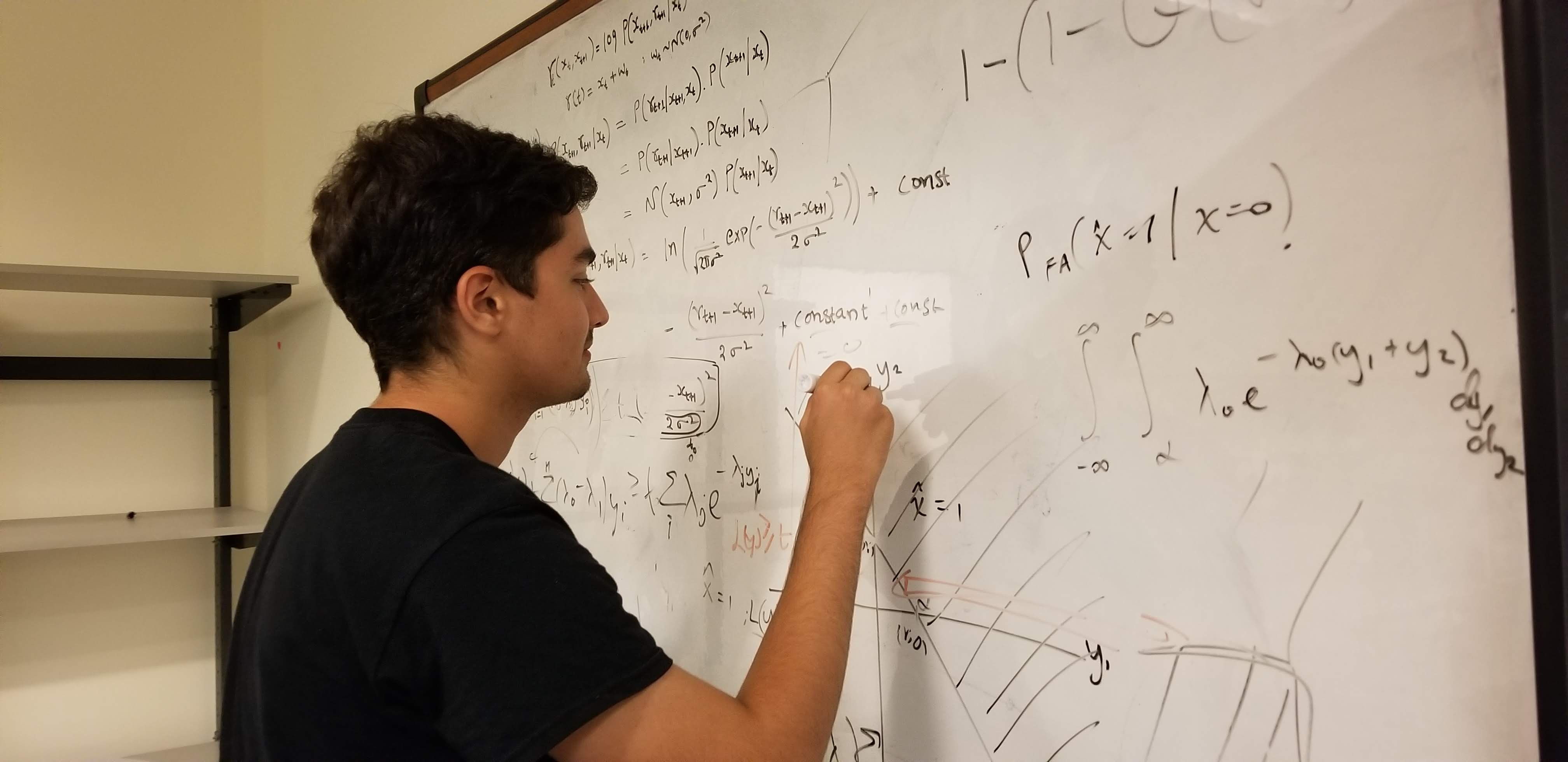
- Lab: CATT (Center for Advanced Technology in Telecommunications) [Electrical Engineering]
- Faculty: Shivendra Panwar
- Mentor(s): Fraida Fund, Mustafa Ozkoc
- Time: 10:20- 10:30am
Abstract: Cellular service providers hope that by deploying 5G, they will be able to offer new profitable services, such as support for connected vehicles. Users are interested in connected vehicle technology, which can improve accident avoidance and traffic efficiency. But, to invest in 5G networks at a level that will support this use case, the benefit of deployment due to revenue from the new services must outweigh the cost of deployment. It is not clear, however, what density of 5G base stations will be required to satisfy the capacity, delay, and reliability requirements of this technology. To address this issue, we will conduct simulations and experiments to determine the level of deployment necessary to support specific connected vehicles applications. This research can help us identify remaining barriers to the widespread deployment of connected vehicles so that we can begin to tackle these barriers.
Julian E. Morales, Sandhya Sethuraman
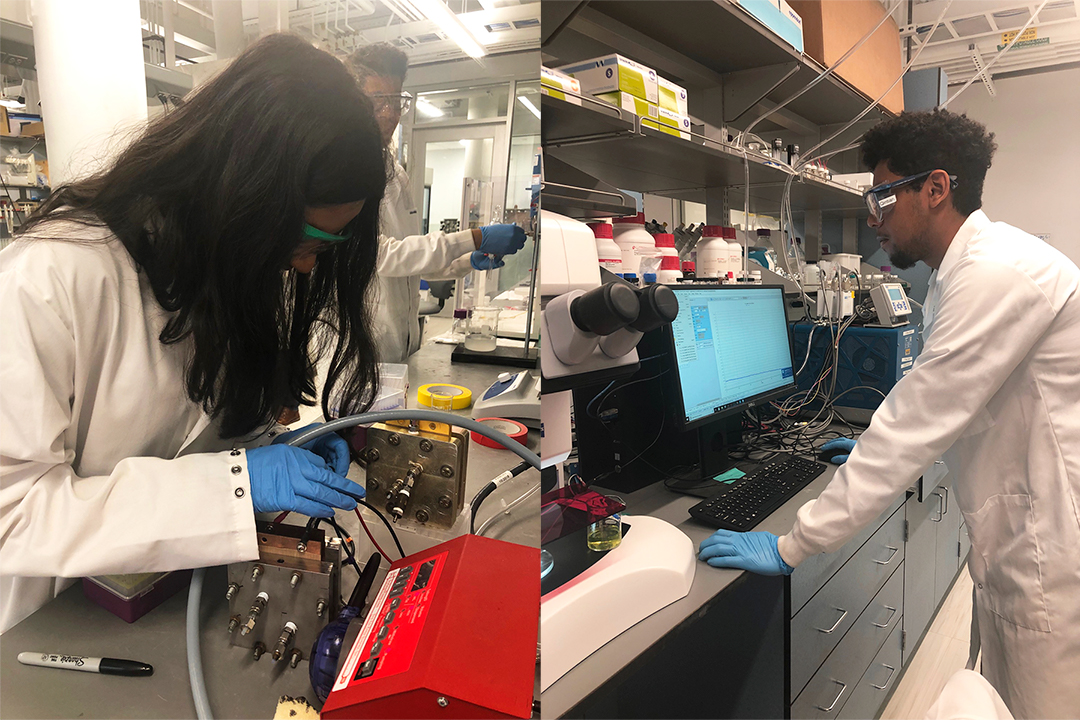
- Lab: Multifunctional Material Systems Laboratory [Chemical and Biomolecular Engineering]
- Faculty: Miguel Modestino
- Mentor(s): Daniela E. Blanco
- Time: 10:30 - 10:50 am
Abstract: Solar textiles is a project focused on improving the efficiency and sustainability of Nylon 6,6, and this study targets the first chemical step to make Nylon. On this step, adiponitrile (ADN) is made electrochemically from a molecule called acrylonitrile (AN) in a redox reaction. The electrolyte used in the process consists of TAA salts for improved selectivity, phosphate salts for charge transport, and EDTA as a chelating agent. Prior research (using sodium phosphate) measured the effect of the TAA ion size and concentration, AN concentration, pH, and temperature on electrochemical conversion. This study focuses on the phosphate salts, investigating the effect of the cation size (sodium, potassium, cesium, and rubidium), current density and concentration on the interface interactions and subsequently the efficiency of the pathway to electrochemical conversion. Results from the study could translate into improvements for the process of Nylon manufacturing.
Tonia Curdas
- Lab: Developmental Genomics [Biology]
- Faculty: Christine Rushlow
- Mentor(s): Shawn Huang, Peter Whitney
- Time: 10:50 - 11:00 am
Abstract: Zelda is a key transcription factor that is known to activate hundreds of genes in the early embryo. The Zelda protein contains six zinc finger (ZNF) domains. ZNF 3-6 bind to CAGGTAG motifs, while ZNF2 binds a GGG motif. The CAGGTAG site has been well characterized in hundreds of target enhancers, however, little is known about the GGG site because GGGoccurs too frequently in the genome to pinpoint. Therefore, we will take a genetic approach and test whether the expression of Zelda targets is affected in embryos that contain Zelda proteins that contain mutations in ZNF2 but not ZNF3-6. We will use in situ hybridization to assay RNA expression of a handful of known Zelda target genes in ZNF2 mutants. Any changes in the expression pattern of a gene in these mutants will indicate that ZNF2 is required for normal expression.
Haqq Coulibaly, Islam McDowell
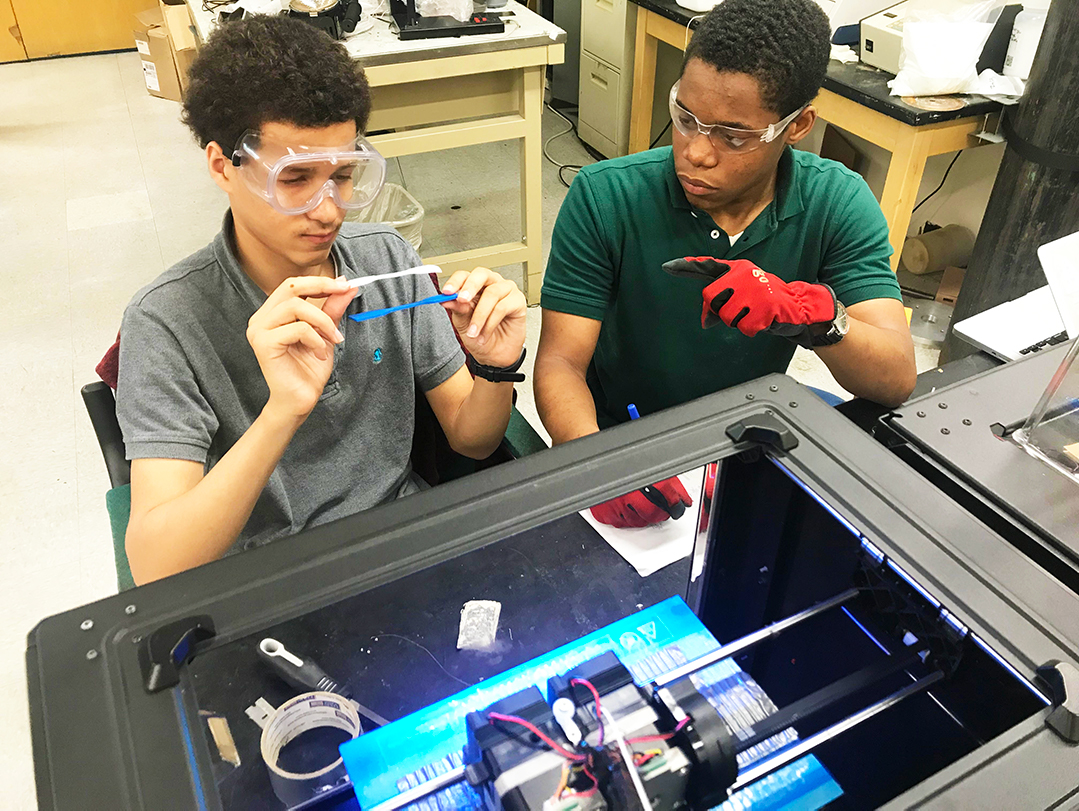
- Lab: CMML [Mechanical Engineering]
- Faculty: Nikhil Gupta
- Mentor(s): Xu, Xianbo
- Time: 11:10 - 11:30 am
Abstract: As a revolutionary technology, 3d printing provides greater design freedom for developing highly customized components. It has already revolutionized design and manufacturing in multiple fields including aerospace, automotive, and medical. The main goal of his project is to develop new composite filament for marine application. Due to its lower density and high specific compressive properties, syntactic foams is widely used in submarine application. In this work, the high-density polyethylene based syntactic foam filaments with various volume percentages are developed. The filament is applied to print testing samples with commercial 3d printer. Then the tensile and high speed properties of the printed materials are investigated. Results will show the strength and modulus of several syntactic foam compositions comparable to those of the neat matrix resin.
Ciro Salcedo
- Lab: Developmental Genomics [Biology]
- Faculty: Christine Rushlow
- Mentor(s): Shawn Huang, Peter Whiteny
- Time: 11:30 - 11:40 am
Abstract: Transcription factors can activate target genes by binding to specific binding site in their regulatory elements. Zelda is a key transcription factor that is distributed uniformly throughout the embryo and binds to CAGGTAG motifs to activate downstream target genes. Zelda is referred to as the zygotic genome activator because it activates many of the genes transcribed in the early embryo. There are two types of Zelda target genes. Class I genes are transcribed uniformly throughout the embryo like Zelda. Class II genes are transcribed in specific spatial domains established by the patterning morphogens. In this study we will characterize a set of putative Class I genes. Previous work has established that they are highly down-regulated in the absence of Zelda, however, the timing of expression – when they are turned on and when they are turned off - has not yet been characterized. Using in situ hybridization techniques, we will analyze when and where they are expressed in early embryos. In addition, using genome-wide data of RNA Pol II binding and chromatin accessibility we will compare genomic features of Class I and II genes to better understand these different types of Zelda target genes, which will lead to a greater understanding of how Zelda, and other genome activators, function in early development.
Kennan Grumbs, Heeyun Kim
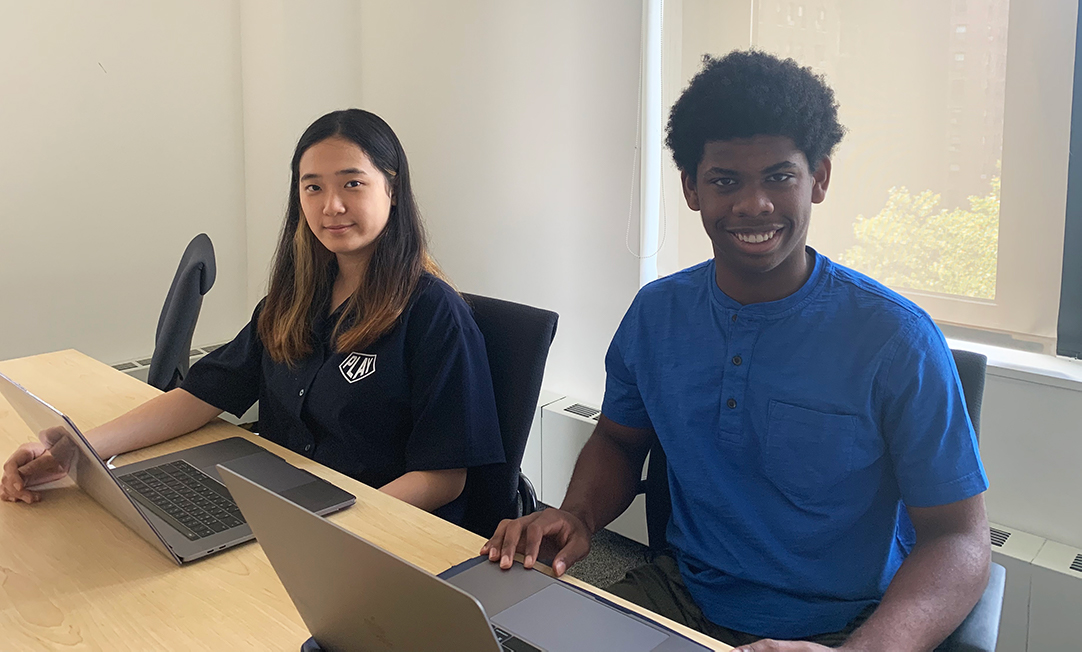
- Lab: Responsible data Science Lab [Computer Science]
- Faculty: Julia Stoyanovich
- Mentor(s): Kunal Relia, Théo Delemazure
- Time: 11:40 - 12:00 pm
Abstract: Computational social choice is an interdisciplinary area of research and practice that combines insights from mathematics, logic, economics and computer science to aggregate preferences of individuals to arrive at a society-wide consensus. In a standard election, selecting a winner is trivial: simply pick the candidate with the majority of votes. However, as the number of candidates increases and different voting rules are used, it becomes increasingly difficult to determine the outcome. More specifically, dealing with incompleteness and uncertainty, an inherent characteristic of polling is a serious challenge confronted in this field of research. While initial computational social choice researchers focused on formulating algorithms to determine winners given partial preferences, currently work is being done to carry this forward to implement and optimize such algorithms. Despite the importance of the problem, there is no comprehensive, public dataset of partial preferences of real-world elections. To address this, we mine datasets of recommender systems and rating websites to develop a comprehensive dataset of partial preferences, where each voter (e.g., viewers on Netflix) gives their preferences over a subset of candidates (e.g., movies on Netflix). We plan to use this dataset to validate our optimizations of the algorithms we are developing, and to eventually make this dataset public.
Shanya Sam
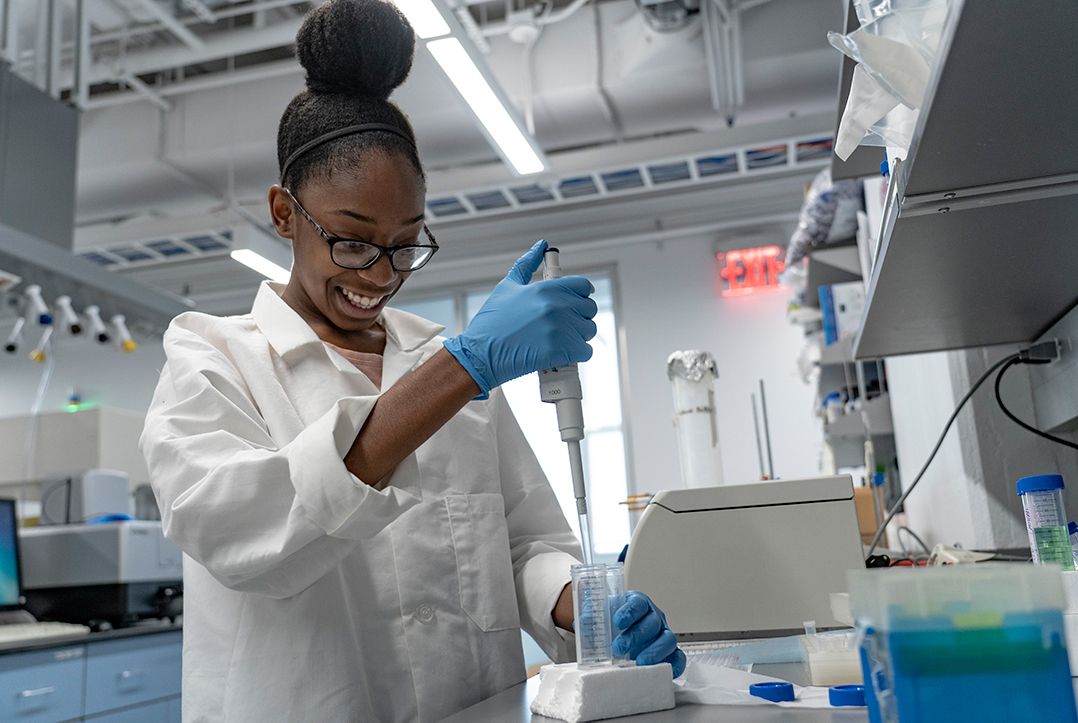
- Lab: Protein Engineering & Molecular Design Lab [Chemical and Biomolecular Engineering]
- Faculty: Jin Montclare
- Mentor(s): Aparajita Bhattacharya
- Time: 12:00-12:10 pm
Abstract: Theranostic agents are being developed for their ability to diagnose disease and improve therapeutic delivery. Traditional drug delivery has been inefficient due to factors such as drug insolubility, tissue indiscriminate cytotoxicity, their inability to stimulate release and their lack of direct monitoring. Recently, we have engineered a protein-based theranostic agent, fluorinated thermo-responsive assembled protein (F-TRAP) bearing fluorinated amino acids. F-TRAP self-assembles into micellar structures and consists of hydrophobic pores capable of encapsulating the chemotherapeutic drug molecule, doxorubicin. Moreover, F-TRAP is traceable via 19F magnetic resonance imaging (MRI). To increase the sensitivity for imaging, we are developing a positron emission tomography (PET) visible agent, 18F-TRAP. In this project, we will employ residue-specific incorporation of an azide-bearing methionine analog, azidohomoalanine to give rise to clickable azide-functionalized TRAP that can be subsequently conjugated to 18F-BODIPY alkyne (boron-dipyrromethene alkyne), imparting it an ability to be used as a dual modality PET probe.
Venue 2 Abstracts
Samantha Lydon
- Lab: Molecular and Cellular Biology [Biology]
- Faculty: Fei Li
- Mentor: Qianhua Dong
- Time: 10:00 - 10:10 am
Abstract: The centromere is a condensed region of chromatin which binds to microtubules to facilitate chromosome segregation during cell division. Each chromosome only has one centromere. The formation of each centromere is based on the location of a specific histone H3 variant called the CENP-A protein, an epigenetic factor, as opposed to nucleotide sequence, which is a genetic factor. CENP-A binding is antagonized by another protein, known as Ccp1, in the single-cell eukaryotic organism S.pombe, in areas where chromatin is not intended to form the centromere. This prevents multiple centromeres from forming on one chromosome, which would interfere with chromosome segregation in the cell cycle. This, in turn, would result in daughter cells that are aneuploid, which is the hallmark of cancer. Ccp1 localizes to the centromeric region in a cell-cycle dependent manner. However, the manner by which Ccp1 localizes to the centromeric region is not clear. The goal of this project is to investigate which candidate proteins and defined region of the protein is required for Ccp1 to load to the centromere. CRISPR technology will be used to delete some codons from the candidate genes in vivo to see the effect of Ccp1 localization by GFP tagging. Mis-localization of CENP-A can cause severe defects, such as aneuploidy, cancer, or cell death. Understanding the mechanism of Ccp1 prevent excessive CENP-A from loading in centromeric region will likely open the door for the development of new strategies for cancer diagnosis and therapy.
Rohan Saha, Lara Thain

- Lab: Chunara Lab [Computer Science]
- Faculty: Rumi Chunara
- Mentor: Vishwali Mhasawade, Harvineet Singh, Rumi Chunara
- Time: 10:10 - 10:30 am
Abstract: Online sources, such as social media activity, provide us with a way to monitor and analyze individuals’ health behavior in unprecedented detail. Combining rich behavioral data from online sources with more traditional sources such as community-level surveys provides a way to understand the factors affecting health disparities in communities. Our research will center on the food consumption behavior, as shared on social media platforms, and its relationship with the built environment of individuals. The built environment is taken to be the individuals’ physical neighborhoods as well as their online network. The aim is to determine whether this expanded notion of built environment explains the variation in the individuals’ food consumption patterns and to understand the associated mechanisms. We will gather and annotate data from the social media platform Instagram. Different measures of food consumption patterns such as frequency and timing of eating-out will be analyzed. Statistical analyses will be conducted to infer the relationship among individual’s built environment, social network and consumption patterns. The findings from the analyses will be visualized and summarized in a report.
Megan Gupta-She

- Lab: CUITS: Behavioral Urban Informatics, Logistics, and Transport (BUILT) [Civil Engineering]
- Faculty: Joseph Chow
- Mentor: Reuben Juster
- Time: 10:30 - 10:40 am
Abstract: With the rise of big data and data science, many different processes in transportation can be studied in-depth and be made more efficient. In urban areas, a substantial part of transportation is provided by the For-Hire Vehicle (FHV) industry, especially government licensed for-hire vehicles. This study aims to determine the effects of different atmospheric conditions on the concentration and distribution of both yellow and green taxi trips in New York City using Taxi Limousine Commision (TLC) public data, historical meteorological data, geospatial data, and open-source PostgreSQL database. Results will be displayed visually using Tableau and Geographic Information System (GIS) software.
Mahmoud Elghayesh, Kazi Islam

- Lab: Hartman Lab [Chemical and Biomolecular Engineering]
- Faculty: Ryan Hartman
- Mentor: Filip Popovic
- Time: 10:40 - 11:00 am
Abstract: Microfluidics has matured as a field over the course of the last three decades. It is now finding widespread application in disparate fields (such as microbiology, flow chemistry etc.). However, a certain level of expertise is required for the proper use of microfluidic devices. Improper use leads to critical experimental errors which arise from the possible incorrect assumption of flow regime. These errors can unknowingly propagate and lead research to arrive to false conclusions illegitimating their experiment. Microfluidic devices tend to make use of certain topological arrangements of microfluidic channels. These channels are used for the transport of material. The efficacy, efficiency, pressure drop, and homogeneity of constituent concentration of this transport depends on fluid flow characteristics, such as flow rate and flow regime, as well geometric factors of the channel: tortuosity, characteristic length(s) and others. Studies on different flow reactors to uncover conditions where the assumption of plug flow becomes invalid were conducted. This should provide a foundation where the results can be utilized to drive industry, medicine, and other fields where microfluidic flow technology is being rapidly adopted.
Roxanna Alvarado
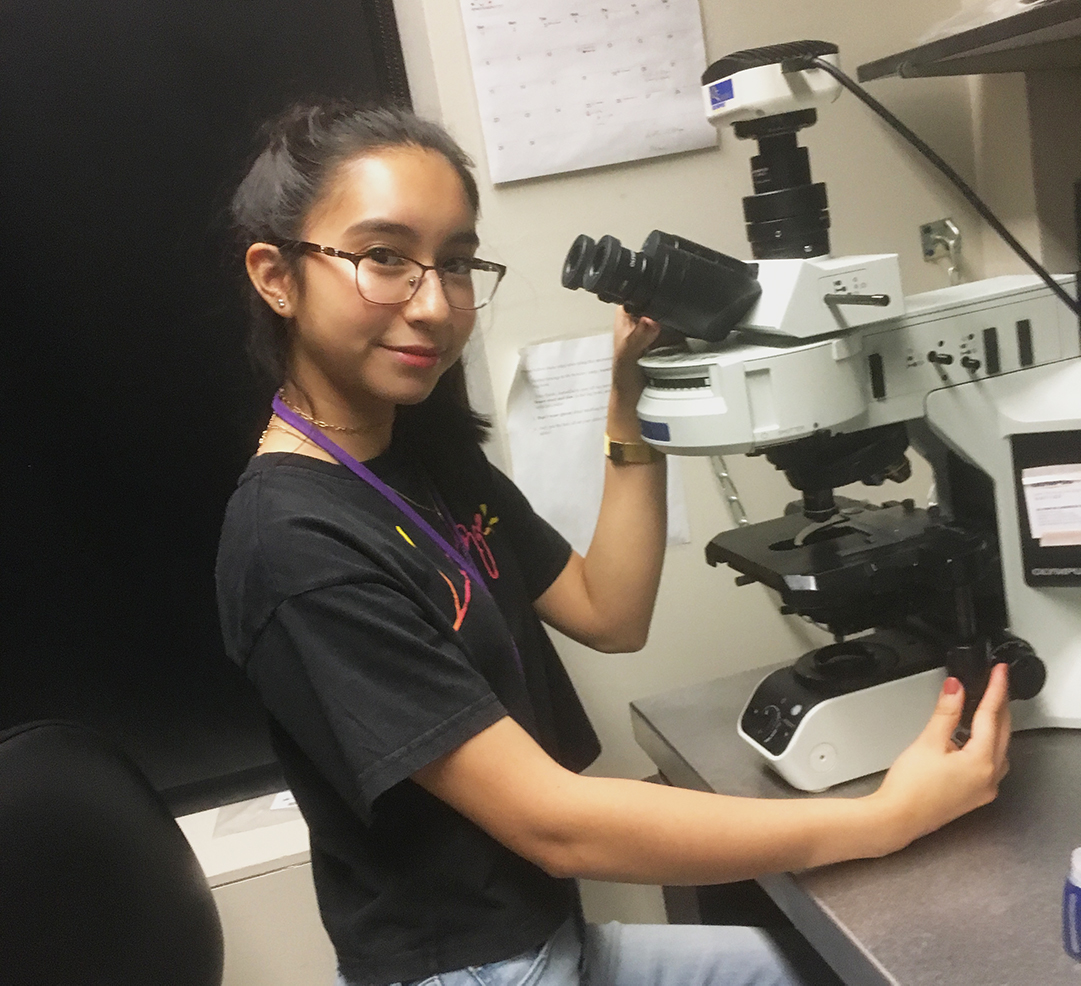
- Lab: Molecular and Cellular Biology [Biology]
- Faculty: Fei Li
- Mentor: Hyoju Ban
- Time: 11:10 - 11:20 am
Abstract: In eukaryotic genomes, there are two different types of chromosomes. Chromosomes are DNA strands which are wrapped around histones. The two types of chromosomes in a eukaryotic genome are heterochromatins and euchromatin. Heterochromatins are densely packed making it less accessible for transcription whereas euchromatins are lightly packed and are often actively transcribed. Heterochromatins are located in the pericentromeric regions of the chromosome, which surrounds the centromere, a site where sister chromatids bind. A crucial function of heterochromatins is to prevent repetitive DNA sequences from causing genetic instability. The heterochromatin “silences” repetitive sequences preventing them from being expressed. Heterochromatins have a spreading property to neighboring genes. Consequently, this results in multiple neighboring genes being silenced. We plan to use yeast pombe for our experiment because pombe has well conserved and defined heterochromatins. In order to find a novel factor that spreads heterochromatins we will over express our candidate genes. We will observe the silencing of a neighboring gene to the pericentromere, adenine6 by growing the cell in media – adenine. With the research of our novel factor we can contribute to our understanding of the mechanism behind heterochromatin spreading, which is associated with pathological conditions such as cancer and aging.
Jessica Katzman, Awestaa Zia

- Lab: UrbanMITS [Civil Engineering]
- Faculty: Kaan Ozbay
- Mentor: Suzana Duran Bernardes
- Time: 11:20 - 11:40 am
Abstract: In New York City, cyclist fatalities are becoming an increasing concern. According to reports released by the Department of Transportation, fifteen fatalities have already been reported this year, surpassing the total number of deaths reported in the previous year. The growing concern for bike safety has discouraged many New Yorkers from utilizing bicycle lanes throughout the city. This study hopes to understand the effect of car proximity on the stress levels of cyclists. We believe that increased car proximity will contribute to high levels of stress in cyclists. We will measure changes in distance between cars and bicycles using ultrasonic sensors, a Global Positioning System (GPS) receiver, and a real-time clock (RTC) connected to a Raspberry Pi mounted on a bicycle. Additionally, we will monitor cyclists’ level of stress throughout their ride. We will implement Python algorithms to analyze data collected by the sensors. We hope our findings contribute to the ongoing research to improve cyclist experiences by eventually mapping high-risk bike routes and developing an app to provide cyclists with relevant information for them to make safer decisions when cycling.
Minuk Kim

- Lab: CATT (Center for Advanced Technology in Telecommunications) [Electrical Engineering]
- Faculty: Shivendra Panwar
- Mentor: Fraida Fund, Mustafa Ozkoc
- Time: 11:40 - 11:50 am
Abstract: Emerging 5G networks comprise multiple novel technologies. It remains unclear what combinations of these are necessary to support new applications in entertainment such as virtual and augmented reality (VR & AR), 3D holographics, and haptics. These applications have various capacity, delay, and reliability requirements. If these are not met, the entertainment experience can be very poor. To address this issue, we will quantify the specific requirements associated with these new entertainment technologies in various scenarios. As a result of this work, we will know more specifically what it will take for future networks to support better media platforms and new, immersive entertainment experiences.
Kevin Cheng, Cara Mulrooney

- Lab: Applied Dynamics and Optimization Lab [Mechanical Engineering]
- Faculty: Joo H. Kim
- Mentor: William Z. Peng, Hyun Seok Shin, Jordan Benjamin Birnbaum
- Time: 11:50 - 12:10 pm
Abstract: Currently, there is a lack of accurate models for energy expenditure within the field of robotics. In this work, the energetic properties of the MX-28 servo motor are characterized for the purpose of developing an energy expenditure model for the gait of the DARwIN-OP, a biped walking robot. This research builds on existing modeling work for the Cornell Ranger, a passive dynamic walking robot developed for low power usage. In brushed DC motors, such as the one within the MX-28 servo motor, a voltage drop exists between the brushes and the commutator due to inherent resistance at the contact interface. While the motor torque-speed performance curve is known from previous studies and manufacturer data, this contact voltage drop has not been previously characterized. Using a cantilever setup with a load cell, where the MX-28 test motor is connected to a brake motor, an external torque is applied to stall the test motor. The motor current and voltage are measured with an INA169 Sensor under a specified set of stall torques in order to determine the contact voltage drop at the brushes. The results of these experiments will be employed towards the optimal motion planning of walking robots based on their energy expenditure.
Venue 3 Abstracts
Adrian Kuka, Ithzel Toscano
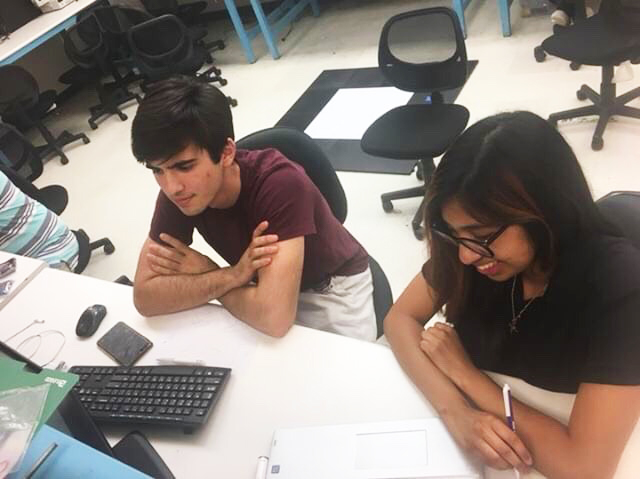
- Lab: Mechatronics, Controls, and Robotics Lab [Mechanical Engineering]
- Faculty: Vikram Kapila
- Mentor(s): Sai Prasanth Krishnamoorthy
- Time: 10:00 - 10:20 am
Abstract: Reinforcement learning is a type of machine learning where an agent is put into an environment only knowing the possible actions it can take. Over time, the agent will learn the most optimal choice to make in each state because each decision has a cost or a reward. Using Reinforcement learning, we will program a robot to find two resources in a five by five map and return them to a drop-off location, and we will create a pendulum that will learn how to balance itself upright with only control of its velocity and angle. We aim to create software to observe and understand these two experiments digitally. Then, we will create physical models to represent them in the real world.
Isabelle Greene
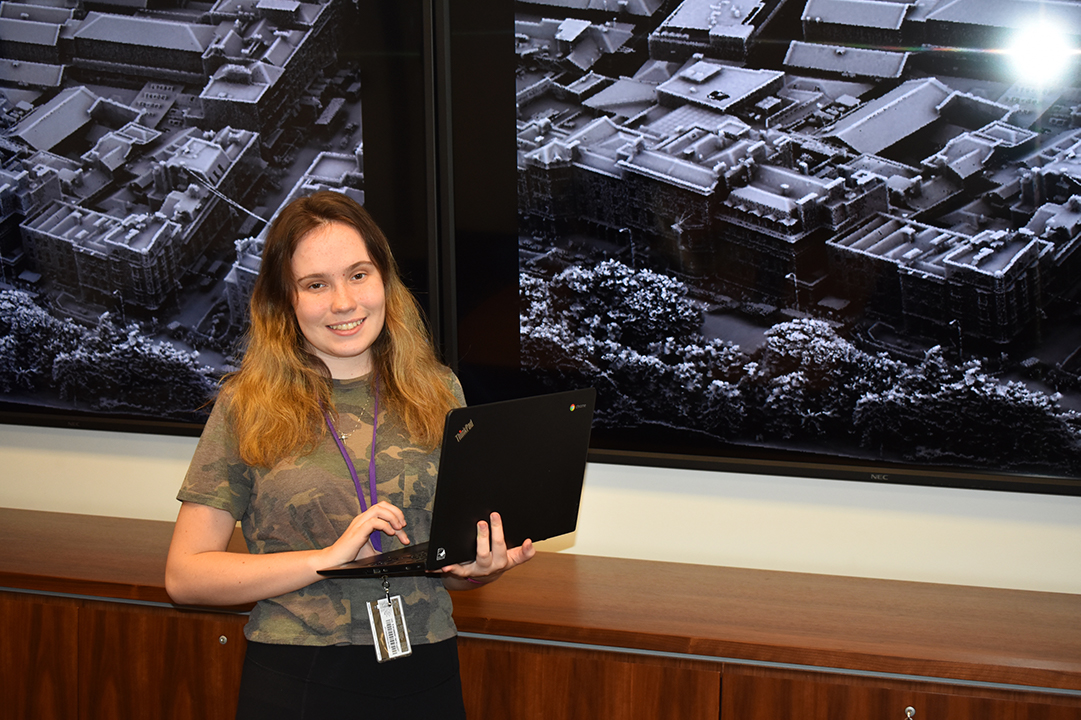
- Lab: Urban Modeling Group [Civil Engineering]
- Faculty: Debra Laefer
- Mentor(s): Anh Vu Vo, Debra Laefer
- Time: 10:20 - 10:30 am
Abstract: Overhead utility lines provide the electricity needed to supply homes and businesses across the country. However, these lines often come into conflict with trees, which can lead to power supply interruptions for customers, reduced lifespans for the trees, and hazardous conditions for residents and utility workers when lines are damaged or broken. This project aims to develop a software application for automatic detection of trees and above ground utility lines from high-resolution, three-dimensional airborne laser scanning datasets collected in Sunset Park in NYC. This will be a step towards a fully automatic software system for predicting when a tree is likely to come in contact with a line, thereby minimizing manual inspection and enabling a more systematic approach to intervention against vegetation incursion.
Nusrat Aishi, Zahniya Thousand

- Lab: Chromosome Inheritance Lab [Biology]
- Faculty: Andreas Hockwagen
- Mentor(s): Jonna Heldrich
- Time: 10:30 - 10:50 am
Abstract: Meiosis is a specialized type of cell division that is required for sexual reproduction and generates genetic diversity. During this process, the DNA undergoes programmed breakage and repair to exchange genetic information and ensure proper segregation of the DNA during cell division. Mistakes in this process can result in infertility or birth defects. Our research aims to better understand the break and repair of the DNA. We are using a mutagenesis screen to identify the genes that are involved and how they function. Our lab utilizes yeast because of its rapid growth and simple genome. Additionally, meiosis is conserved from yeast to humans so our research will improve understanding of how this complex process occurs in humans.
Marin Hyatt

- Lab: Music and Audio Research Lab [Electrical Engineering]
- Faculty: Juan Bello
- Mentor(s):Mark Cartwright, Juan Pablo Bello
- Time: 10:50 - 11:00 am
Abstract: Noise pollution is a phenomenon that significantly decreases the quality of life for many residents in New York City and other urban environments. The Sounds of New York City (SONYC) project aims to mitigate urban noise pollution using a data-driven approach. By combining machine listening with an acoustic sensor network deployed throughout the city, the project is working toward mapping the spatiotemporal patterns of the sources of noise pollution in New York City. In this work, we focus on investigating the causes of noise pollution in Red Hook in particular—the residents of Red Hook believe that the excessive number of trucks passing through their neighborhood is the chief cause of noise pollution in the area. To investigate this hypothesis, we have stationed multiple acoustic sensors in the neighborhood and are building models and tools to quantify and visualize the acoustic patterns related to trucking activity in the area. With such tools, we can then investigate how the implementation of different trucking routes affects the level of noise pollution, in order to implement a route that minimizes the noise heard by the residents of Red Hook and improves their quality of life.
Gideon Asumeng, Aliyan Malik
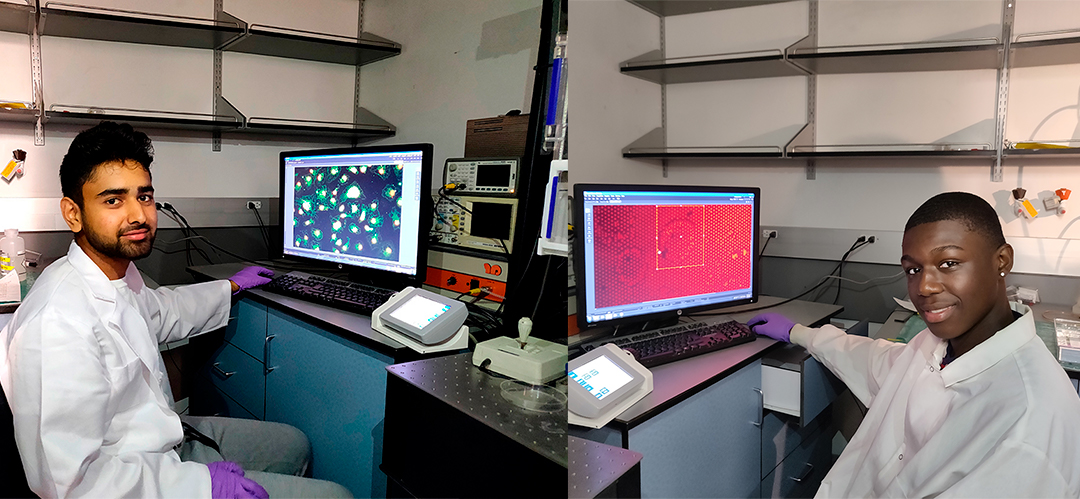
- Lab: Applied Micro-Bioengineering Lab [BioMedical Engineering]
- Faculty: Weiqiang Chen
- Mentor(s): Apratim Bajpai
- Time: 11:10 - 11:30 am
Abstract: Macrophages, B- Cells, and T-Cells form the backbone of the human bodies immune system, performing a myriad of functions including phagocytosis, wound healing, antigen presentation and cytokine production. The plasticity of immune cells plays an important role in their ability to perform their intended and often unintended functions, and physical forces are an important regulatory mechanism in altering the behavior of immune cells. Here, we use polydimethylsiloxane (PDMS) based micropillar devices called Micropost Array Detectors (mPADs), and Traction Force Microscopy (TFM) to study the physical regulation of immune cells and their responses. We regulate the immune cells using drugs and physical cues i.e, ultrasound tweezers, and measure the forces that they exert using mPADs and TFM, to determine the mechanisms involved in mechanosensing and the role that physical forces may play in immune cell functions. This research will shed light on the mechanotransduction of immune cells and may help in understanding the progression and treatment of diseases such as atherosclerosis, leukemia, and many more.
Emely Lopez
- Lab: Urban Modeling Group [Civil Engineering]
- Faculty: Debra Laefer
- Mentor(s): Anh Vu Vo, Debra Laefer
- Time: 11:30 - 11:40 am
Abstract: The federal government mandates that utility companies maintain their above ground lines free of interference from local vegetation. This mostly consists of trimming trees to prevent them from coming into contact with above ground electrical wires. Current practice involves manual inspection, which is time consuming, expensive, and subjective. This project seeks to streamline the maintenance process by gathering data of trees and utility lines from public databases and identifying appropriate tree growth models for a site-specific locale in order to predict localized incursion. The project will be a step towards an automatic and efficient system for predicting tree and utility line interference.
Zainab Adula, Zachary Dulemba
- Lab: Nanostructured Hybrid Materials [Chemical and Biomolecular Engineering]
- Faculty: Ayaskanta Sahu
- Mentor(s): Haripriya Kannan, Michael Scimeca, Steve Farrell, Ingrid Paredes
- Time: 11:40 - 12:00 pm
Abstract: Sustainable energy is one of the most pressing issues that society faces today. With traditional materials reaching their performance limits, the development of new materials will lead us to meet the global demand for energy in a clean and sustainable fashion. Hybrid materials are an emerging class of compounds that combine inorganic and organic components to produce materials with performance greater than the sum of their parts. Our lab seeks to gain fundamental understanding of the electronic and thermal properties of these hybrid systems. We will do this via the synthesis and characterization of hybrid materials, looking at the effect of composition, size, and shape on thermal and electronic properties. Once reliable methodologies for synthesis have been developed, we will implement our materials into devices including light emitting diodes, solar cells, and thermoelectric coolers.
Phincho Sherpa
- Lab: Music and Audio Research Lab [Electrical Engineering]
- Faculty: Juan Bello
- Mentor(s): Vincent Lostanlen, Juan Pablo Bello
- Time: 12:00 - 12:10 pm
Abstract: Understanding the sounds of wildlife is paramount to the conservation of ecosystems. To this end, researchers in bioacoustics deploy recording devices on the field, thus resulting in massive amounts of digital audio data. The goal of this internship is to develop a new method for making sense of long audio files, lasting an entire day or more, without need to actually listen to them in full. In the case of short recordings, a convenient way to visualize sounds is the spectrogram, which represents the vocalizations of animals as bursts of acoustic energy in the time-frequency domain. For bird sounds, this method cannot be directly scaled up to long recordings, because the duration of a bird call (about one tenth of a second) is too short in comparison with the size of a long-term spectrogram pixel (about one minute). Phincho Sherpa will address this problem by modifying the representation of visual intensity in the time-frequency domain. In addition to energy, as is done in the conventional spectrogram, Phincho will explore other indices of acoustic complexity, such as entropy, flux, phase deviation, and per-channel energy normalization magnitude; and assign them to a multidimensional color map.
Venue 4 Abstracts
Alex Holland
- Lab: Smart Energy Research (SEARCH) Group [Electrical Engineering]
- Faculty: Yury Dvorkin
- Mentor(s): Samrat Acharya, Matt Roveto, and Yury Dvorkin
- Time: 10:00 - 10:10 am
Abstract: Cybersecurity is an emerging field addressing the increasing emergence of cyberattacks. Many industries currently in their infancy are even more vulnerable to hacks due to lack of consensus regarding regulations. An arising field with these susceptibilities is power grids with renewable energy resources, possessing a multitude of viable vectors that can facilitate cyberattacks. Some of these vectors include electric vehicles and their corresponding charging stations, as well as smart home appliances such as WiFi enabled air conditioning systems. To research and observe this issue, I will model data-driven cyberattacks with altered model parameters and analyze these attacks and their effects on the powergrid, as well as the circumstances through which they are able to occur. Using such observations, I will work to conclude the extent to which cyberattackers are enabled or stunted by the various model parameters, while also accounting for inaccuracies in data and the cyberattack model. The research can be further extended to design security measures based on the assessed vulnerabilities.
Eva Das, Oliver Kleinmann
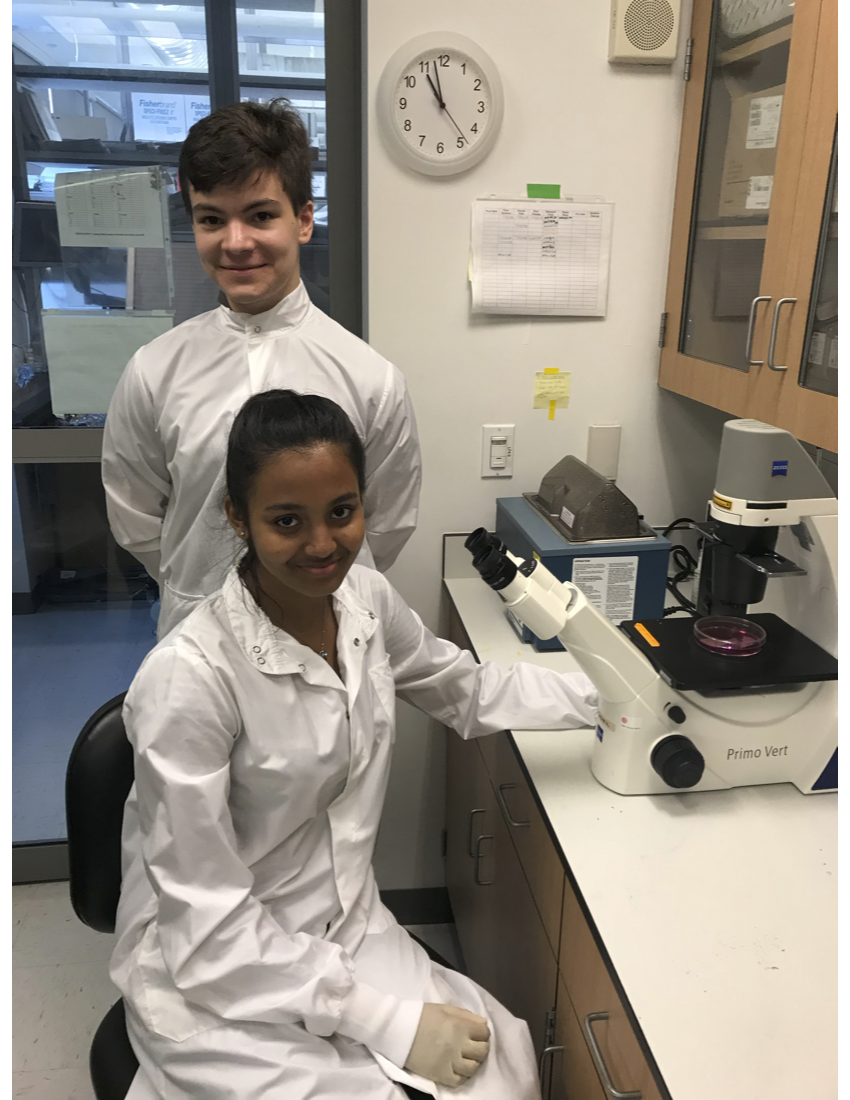
- Lab: System Proteomics [Biology]
- Faculty: Christine Vogel
- Mentor(s): Shuvadeep Maity, Justin Rendleman
- Time: 10:10 - 10:30 am
Abstract: The Endoplasmic reticulum (ER) is the primary site of protein production inside the cell. Proteins get folded inside the ER to become functional. Any conditions that affect protein folding can cause the accumulation of misfolded proteins inside ER and lead to ER stress. ER stress is the cause of several diseases like Parkinson's, Alzheimer's, diabetes, and cancer. Upon ER stress cells activate a response pathway called the Unfolded Protein Response (UPR) to take care of the misfolded proteins and maintain cellular health. If the UPR fails to remove all the misfolded proteins, it can cause cell death. A protein kinase, PERK is one of the key players for the activation of the UPR. Since previous research points to PERK being located within ER-mitochondrial associated membranes, we suspect PERK has an effect on mitochondrial structure and function during ER stress. In this project, utilizing an imaging and molecular biology approach, we will check the impact of ER stress over mitochondria in the presence and absence of PERK.
Jada Jefferson
- Lab: Dynamical Systems Lab [Mechanical Engineering]
- Faculty: Maurizio Porfiri
- Mentor(s):Roni Barak Ventura, Chiara Spinello, Raghu Ram Sattanapalle
- Time: 10:30 - 10:40 am
Abstract: Approximately 8 out of 10 stroke patients are affected by hemiparesis. Hemiparesis is characterized by muscle weakness on one side of the body, which is associated with a loss of mobility and independence. Rehabilitation can help patients with hemiparesis regain motor function, however the process is arduous and involves repetitive exercises. The aim of this project is to build a platform that will help stroke patients to participate in a citizen science project while undergoing rehabilitation. To this end, a lightweight dowel is turned into a controller by utilizing micro-controllers, an inertial measurement unit (IMU) sensor, and a Bluetooth module. Data is collected from the platform to map human movement and score motor performance toward a remote assessment by a practitioner.
Zoë Cappella Cooper, Modupe Oridota
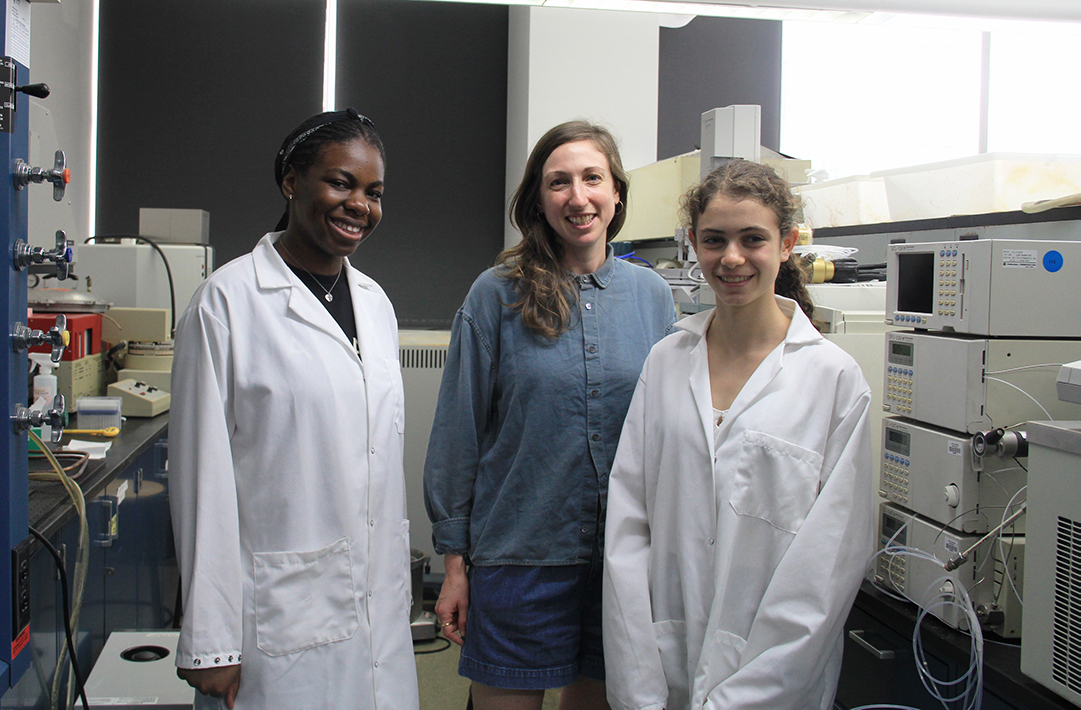
- Lab: Environmental Engineering and Water Treatment Laboratory [Civil Engineering]
- Faculty: Andrea Silverman
- Mentor(s): Mwale Chiyenge
- Time: 10:40 - 11:00 am
Abstract: Flooding in urban centers may change the microbial composition of the flooded surfaces. There is a need to understand this change, particularly in cities like New York City that have combined sewage systems. These systems channel a mixture of sewage and storm water overflow to outfalls located along the coastline during rainfall events. Some of this combined sewage floods streets due to backlog in the system. It is critical to identify if and how these flood waters come in contact with NYC residents. This is especially important as flood events grow more frequent due to higher intensity rainfall as a result of climate change. The ultimate goal of the research is to study the impact of flooding on the microbiome of urban surfaces in NYC by collecting and sequencing DNA from these surfaces before and after flooding. To do this, a baseline measure of the microbial composition of these surfaces is necessary. This particular research is a preliminary stage which aims to establish the baseline by optimizing the DNA collection and extraction procedures. The procedures determined to produce the highest DNA yield will be used to measure and characterize the baseline microbiome of NYC urban surfaces. This baseline will then be used in the next phase of the project by comparing it with the microbiome of recently flooded surfaces. Overall, this research will raise awareness of the possible effects of flooding on the city’s microbiome, which can help motivate interventions to protect the health of NYC residents.
Albert Wan

- Lab: Smart Energy Research (SEARCH) Group [Electrical Engineering]
- Faculty: Yury Dvorkin
- Mentor(s): Matt Roveto, Samrat Acharya, and Yury Dvorkin
- Time: 11:10 - 11:20 am
Abstract: Electric power distribution systems are rapidly undergoing considerable changes to their daily operation due to the increased proliferation of smaller-scale distributed energy resources (DERs). While the benefits of such small scale generation are immense and well-documented (e.g. more efficient market and grid operation, lower environmental impact, providing additional means of control to system operators etc.), many technical challenges, such as unpredictable nodal power injections or unacceptably large, system-wide voltage fluctuations, can arise from improperly incorporating DERs into the existing grid. Furthermore, the majority of DERs will be independently owned, which allows the possibility of participants with appropriately sized DERs to undergo strategic decision making in order to exercise a form of market power. In light of this, more work is needed to efficiently and fairly allow for peers in control of a DER to interact with both each other and other participants in the market while ensuring that the network is operated under a given level of security, and will not suffer severely adverse effects from potential individual decision making. In order to investigate this, I will perform a sensitivity analysis of various factors to gain further insight into the effects of strategic behavior in a distribution network, as well as the effects on a distribution network with many peers who are able to bilaterally buy and sell directly to one another.
Anya Shvarts, Hunter Milles
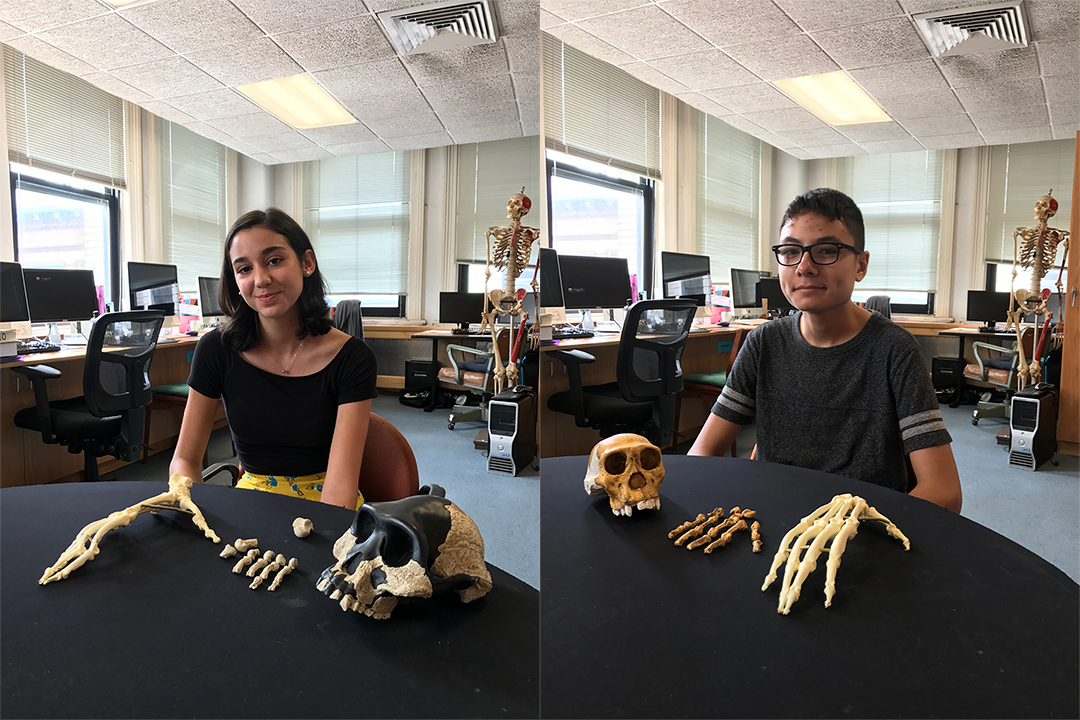
- Lab: Evolutionary Morphology Lab [Anthropology]
- Faculty: Scott Williams
- Mentor(s): Thomas Cody Prang
- Time: 11:20 - 11:40 am
Abstract: Reconstructing how human upright walking (bipedalism) evolved is a major focus of paleoanthropology. In quadrupedal primates, the upper and lower limbs share functional roles in forms of movement (locomotion) usually involving life in the trees (arboreality). The emergence of terrestrial bipedalism freed the human hand from its functional role in arboreal locomotor behavior and allowed for the evolution of increased manual dexterity and manipulative capabilities. The functional differentiation of hominin (humans and our fossil relatives) limbs is therefore closely connected to our unique form of bipedal locomotion. The morphology (shape) of hand and foot phalanges reflects locomotor diversity among primates, including bipedalism in hominins. Most studies of phalangeal morphology have focused on univariate metrics such as longitudinal curvature in either the hand or the foot. However, few studies have quantified phalangeal shape and covariation using more detailed quantitative methods. The purpose of this study is to test the hypothesis that modern humans have lower magnitudes of hand and foot phalangeal shape covariation compared to quadrupedal primates. We plan to quantify the multivariate shape of hand and foot phalanges in humans, fossil hominins, apes, and monkeys using a two-dimensional coordinate method. The covariance of hand and foot phalanges will be quantified using two-block partial-least squares (2B-PLS) and compared between locomotor groups (bipedal vs. quadrupedal). The evolutionary origins of the functional differentiation of limbs will be evaluated by quantifying phalangeal shape in the earliest fossil hominins such as Ardipithecus (4.4 million years old) and Australopithecus (3.2 million years old). Our results will have implications for understanding the timing and pattern of limb functional differentiation in the human lineage as well as the range of possible locomotor behaviors of the human-chimpanzee last common ancestor (LCA).
Jonathan Chen
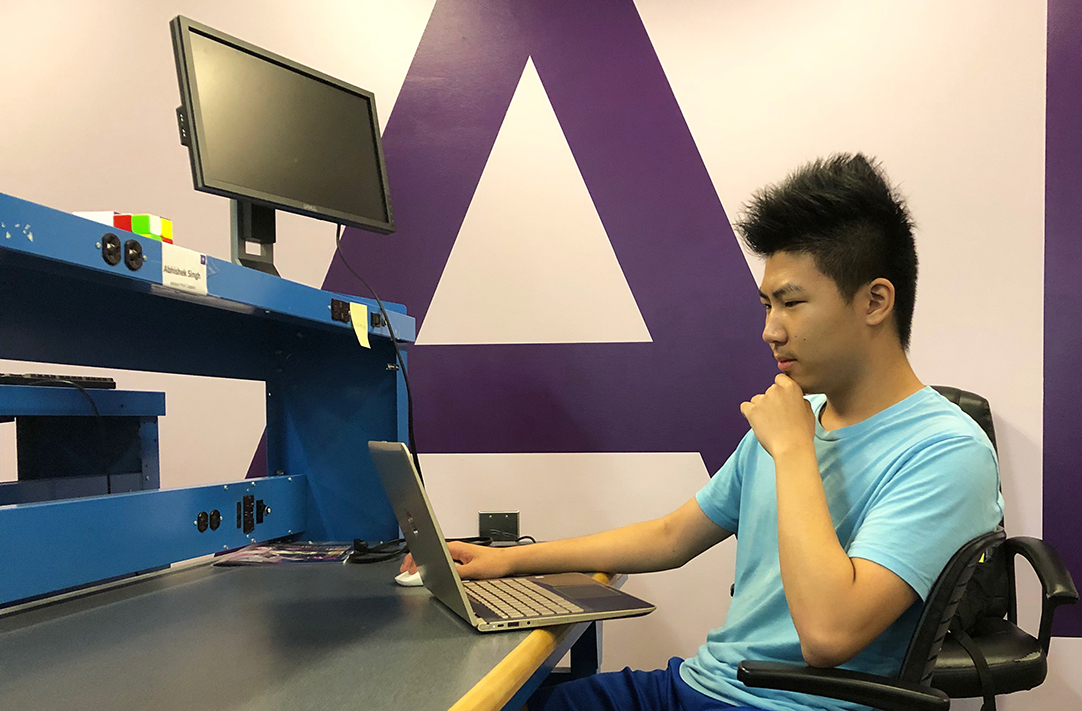
- Lab: Privacy and Security Automation Lab (PSAL) [Computer Science]
- Faculty: Rachel Greenstadt
- Mentor(s): Kejsi Take, Brian Timmerman
- Time: 11:40 - 11:50 am
Abstract:
In this day and age, a sizeable portion of all of the world’s code is written and contributed in an anonymous fashion. Privacy and Security Automation Lab(PSAL) is studying the ways in which automated programs can decipher the identity of a programmer by detecting his or her unique coding style within the code that they wrote. This research stress the threat that machine learning poses to the privacy and anonymity of programmers. In their previous work, PSAL proved that machine learning algorithms were able to effectively determine the author(s) of anonymous code, and that these machines will become increasingly accurate as technology advances.
Christian Hernandez, Myrna Khalil
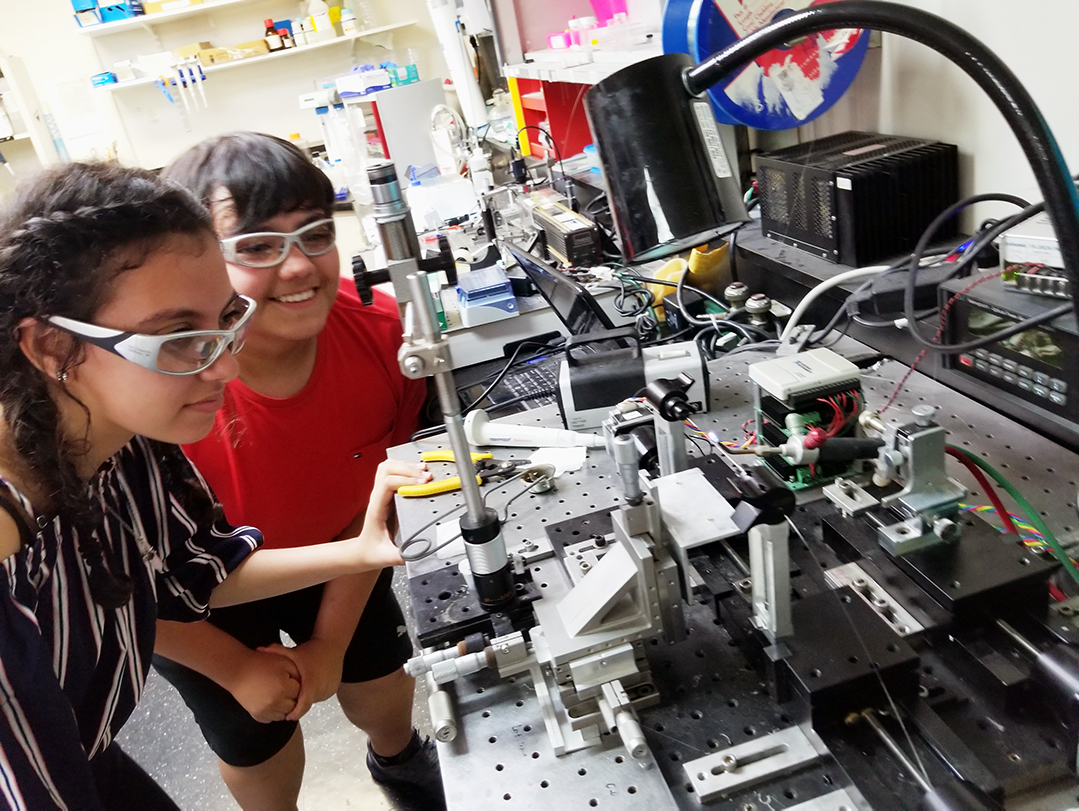
- Lab: Bio-Interfacial Engineering and Diagnostic Group [Chemical and Biomolecular Engineering]
- Faculty: Rastislav Levicky
- Mentor(s): Vladislav Frenkel
- Time: 11:50 - 12:10 pm
Abstract: Biosensors are devices that are most commonly used for the detection of chemical or biological substances with high specificity. Biosensors have profound use in a large variety of fields and applications ranging from food safety and quality control all the way to the testing glucose levels in the blood of diabetics. We are aiming to improve the machinery used to fabricate whispering gallery mode (WGM) biosensors. These biosensors consist of a tapered glass fiber which couples light into a glass microsphere in which the light resonates. These biosensors are very sensitive, detecting molecules as small as single virus particles without the use of any labeling, and have a large variety of applications. Multiplexing these sensors would allow each sensor to detect multiple different molecules. One possible way to multiplex WGM biosensors would be by functionalizing with a light sensitive chemical group which could be selectively altered with light to create distinctive sensing regions. A lot of light needs to couple from the tapered fiber into the sphere in order to break the bonds in the chemical group. Currently the tapered fibers are made by pulling the glass fiber over an open flame. Current tapered fibers are slightly misaligned from the equator of the microspheres resulting in some loss. Improving the design of the fiber pulling mechanism would improve the alignment of the tapered fiber which will increase the amount of light able to enter the sphere and will result in future experiments becoming more reliable. Through the use of 3D printing it will be possible to quickly create and iterate on an improved design.
Venue 5 Abstracts
Naima Akter, Nusrat Islam
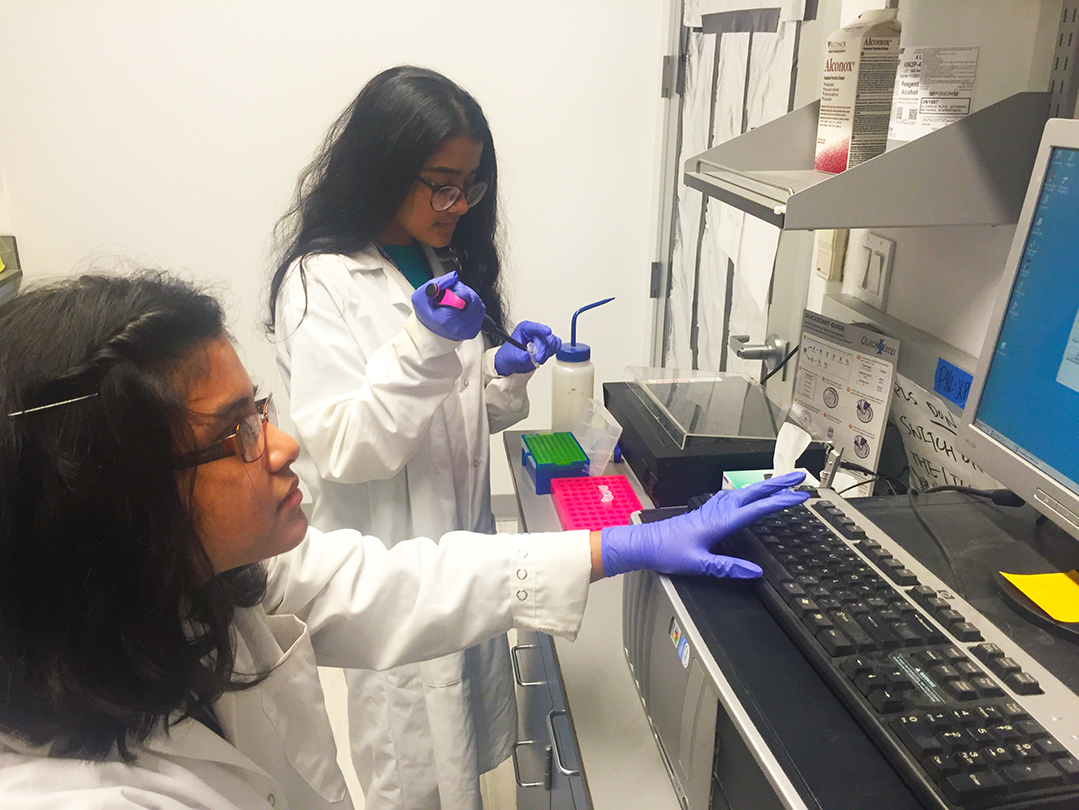
- Lab: Biomolecular Engineering Lab [Chemical and Biomolecular Engineering]
- Faculty: Jin Ryoun Kim
- Mentor(s): Edward Chau
- Time: 10:00 - 10:20am
Abstract: Amyloidogenic diseases are characterized by the abnormal aggregation and mis-folding of proteins. α-Synuclein, a presynaptic neuronal protein, has genetic and neuropathological links to one of the most common age-related neurodegenerative diseases, Parkinson’s disease (PD). α-Synuclein follows an aggregation pathway that forms toxic oligomer and fibrillar structures, affecting an important section of the brain, the substantia nigra, and causing patients to experience memory loss and/or the loss of motor functions. We investigated natural chemical compounds that may be an effective solution to PD, by disrupting the abnormal aggregation pathway of this amyloidogenic protein. Results from this study could contribute to uncovering the process behind amyloid protein aggregation, leading to potential therapeutic treatments and diagnostic tools for such neurodegenerative diseases.
Gabrielle Piña, Yovanna Smith
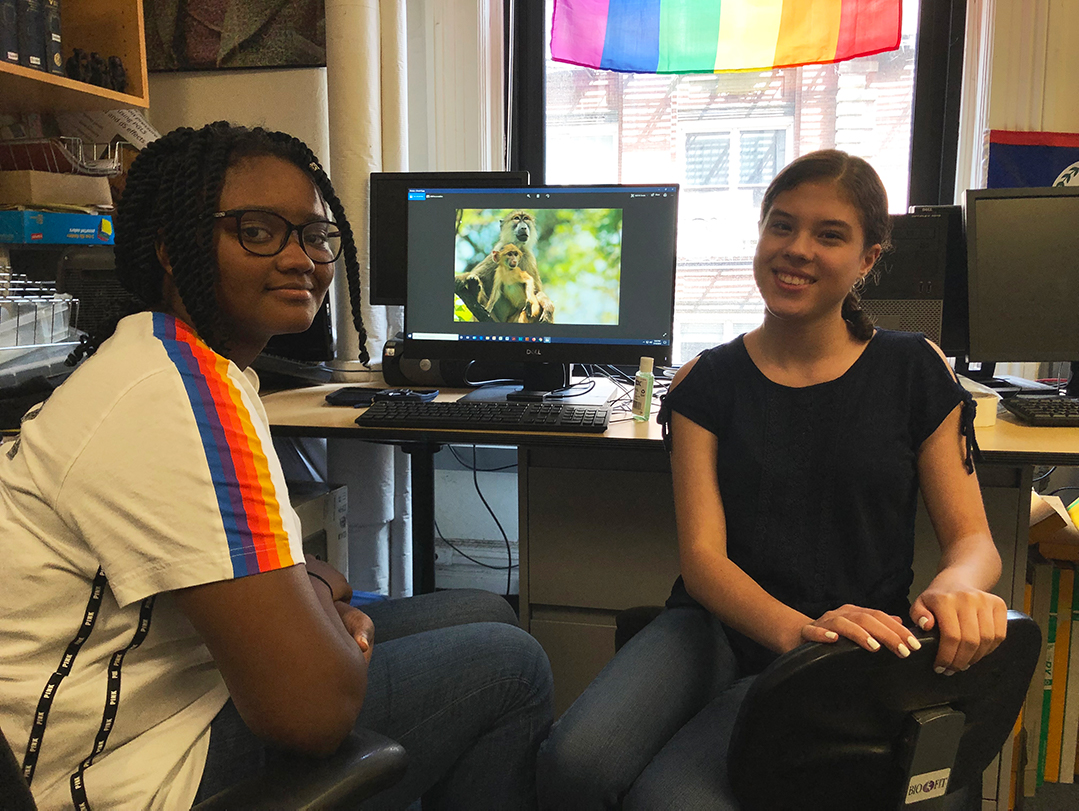
- Lab: Primate Hormones and Behavior [Anthropology]
- Faculty: James Higham
- Mentor(s): Megan Petersdorf, Clare Kimock
- Time: 10:20 - 10:40 am
Abstract: Baboons (genus Papio) include a variety of well-studied species, but less is known about the Kinda baboon (P. kindae). Baboon females exhibit a variety of sexual signals, which in most species accurately indicate fertility. Kinda baboon sexual signals, however, might not accurately indicate fertility because Kinda baboons display different reproductive patterns than other baboon species. We will investigate how accurately the female sexual signals of wild Kinda baboons represent fertility. We will analyze multimodal signals such as swelling sizes, copulation calls, and behaviors in relation to hormonally-determined fertile phases. Through studying these signals we hope to understand the Kinda baboon’s unique mating system and the differences between them and other baboon species.
Ines Villegas Costa, Lauren Pehlivanian

- Lab: BiLab [Civil Engineering]
- Faculty: Semiha Ergan
- Mentor(s):Zhengbo Zou, Xinran Yu
- Time: 10:40 - 11:00 am
Abstract: Buildings account for more than 70% of the energy consumed in the United States. With the increasing demand for energy, it becomes crucial that we develop ways for energy conservation. Therefore, generating a model to accurately predict energy consumption in buildings is necessary for buildings to reduce their energy consumption. The current models used to predict energy consumption of buildings, however, are not accurate, due to the lack of data of building characteristics. This project aims to solve this problem by extracting more data on building characteristics from pictures through computer vision and deep neural networks. We will then use machine learning to make a model to predict the energy consumption of buildings based on their characteristics.
Abhinav Garg
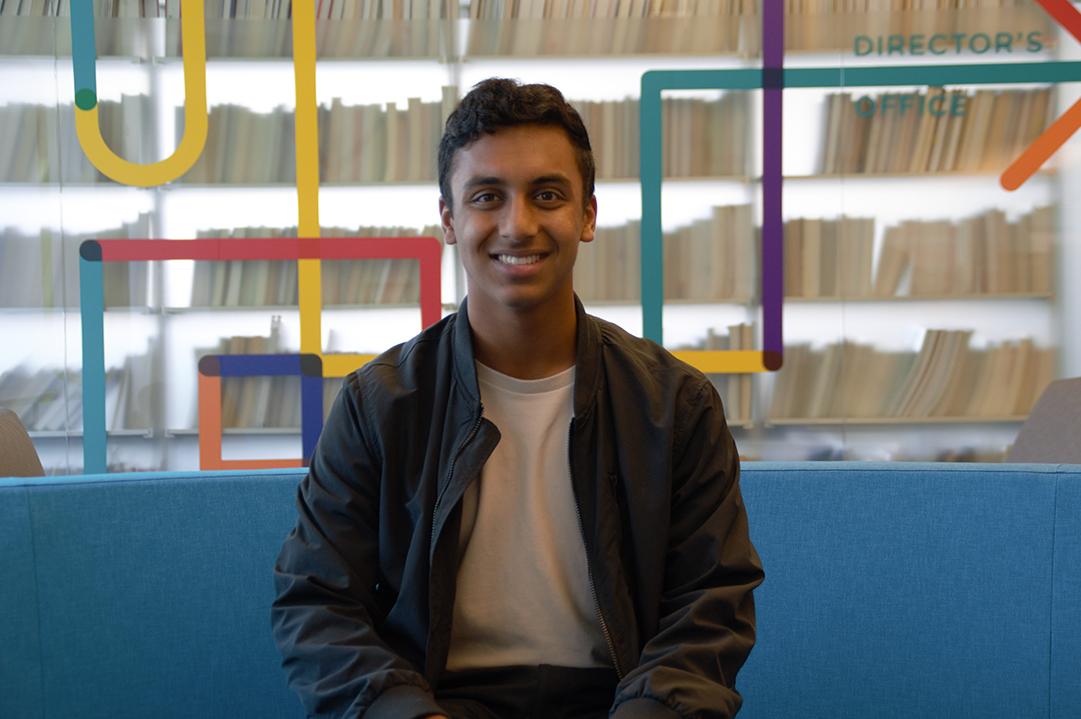
- Lab: CUITS: Behavioral Urban Informatics, Logistics, and Transport (BUILT) [Civil Engineering]
- Faculty: Joseph Chow
- Mentor(s): Reuben Juster
- Time: 11:10 - 11:20 am
Abstract: Safety concerns that arise from congestion-related incidents are a prevalent issue, especially in an urban environment. New York City has witnessed a 30% increase in traffic fatalities in 2019 as compared to 2018 with a multitude of possible factors attributed to the surge. This study focuses on the change in speed prompted by the addition of speed humps and its effect on traffic. Vision Zero geospatial data is utilized in relation to areas of vehicle congestion and collision rates using PostgreSQL in order to analyze possible correlation. Visualization tools including Tableau and geographic information system (GIS) will be fundamental in the understanding of traffic patterns and long-term reduction in casualties.
Kaylee Paucar, Bryan Zen
- Lab: Machine Learning Lab [Electrical Engineering]
- Faculty: Anna Choromanska
- Mentor(s): Devansh Bisla
- Time: 11:20 - 11:40 am
Abstract: As the frontier of the age to information, artificial intelligence has time and time again proved to be a powerful tool in terms of human technological advancement. One such advancement is autonomous vehicles; these machines achieve autonomy through harnessing enormous amounts of data and computing calculated weights through the usage of an advanced neural network. The data gathered however proves to be quite tricky to compile. For example, let’s say you want to teach your AI how to avoid crashing vehicles. By conventional means, you would achieve this by crashing vehicles in a testing area. However, proven to be full of inconsistencies and costly to replicate, companies such as NVIDIA explores other vectors to achieve similar data. Through the use of synthetic mediums such as computer simulations, large amounts of data can be produced with high replicability. This synthetic data can then be applied to real life vehicles for further testing. In conducting this research, our team aspires to train an efficient AI using data collected from the car simulation with minimal errors; in turn, proving the viability of synthetic data.
Matias Fernandez Sasso

- Lab: Dynamical Systems Lab [Mechanical Engineering]
- Faculty: Maurizio Porfiri
- Mentor(s): Chiara Spinello, Roni Barak Ventura, Raghu Ram Sattanapalle
- Time: 11:40 - 11:50 am
Abstract: Preclinical research involving laboratory animals traditionally entails the use of live stimuli to study a wide range of behavioral domains, such as social behavior or fear and anxiety related behaviors. Recently, many efforts have been made to replace live stimuli with robotic stimuli. The latter are now frequently integrated in laboratory studies to yield repeatable, customizable, and controllable experimental conditions. In our lab we have been building robotic platforms capable of maneuvering bio-inspired fish replicas in a tank while in interaction with a real fish. In this work, the functionality of our robotic platform will be improved through the implementation of a new microprocessor (Teensy) that will replace the Arduino micro-controller to increase the processing power and reduce the latency of the platform. We will adjust the code to the new micro-controller, and will test the functionality of the platform. The improvement in the platform’s functionality will increase the smoothness and the controllability of the stimuli’s movements in the tank.
Isabel Betances, Syed Tajrian
- Lab: Chromatin Genomics - Ercan Lab [Biology]
- Faculty: Sevinc Ercan
- Mentor(s): David Jimenez, Bhavana Ragipani
- Time: 11:50 - 12:10 pm
Abstract: Condensins are multisubunit protein complexes that are involved in the organization of chromosomes in all species. In humans, there are two types of condensins required for chromosome condensation during mitosis and meiosis. In C. elegans, there is an additional complex called the dosage compensation complex (DCC), a protein which is recruited to motifs on the two X-chromosomes of the hermaphrodite worm and downregulates the transcription of genes on each X-chromosome by half. In C. elegans we observed that when an X-chromosome is fused to an autosome, the worm seems to be phenotypically longer, however we do not know how the DCC contributes to the change in length. It is possible that the deleted ends of the chromosomes decreased the length of the worms, but it is also possible that the DCC represses the transcription of other genes that also decrease worm body length. We will use RNAi to target the DCC, and we will image four fusion strains to measure worm length. We hypothesize that spreading of the DCC is inhibiting the transcription of certain genes, causing the worms to be longer in length. This will help broaden our understanding of the mechanisms of DCC, chromatin condensation, and how they affect C. elegans and other species.




